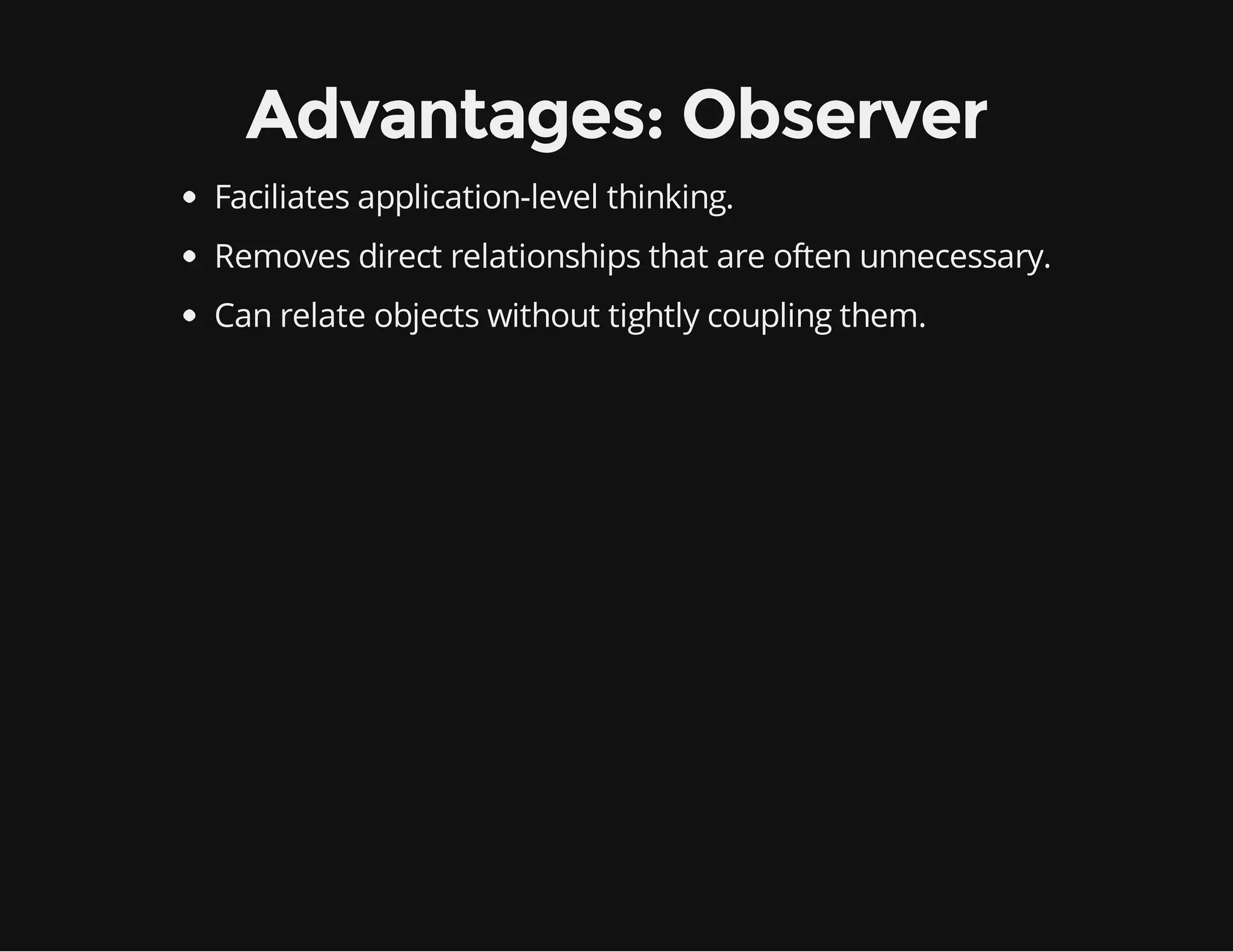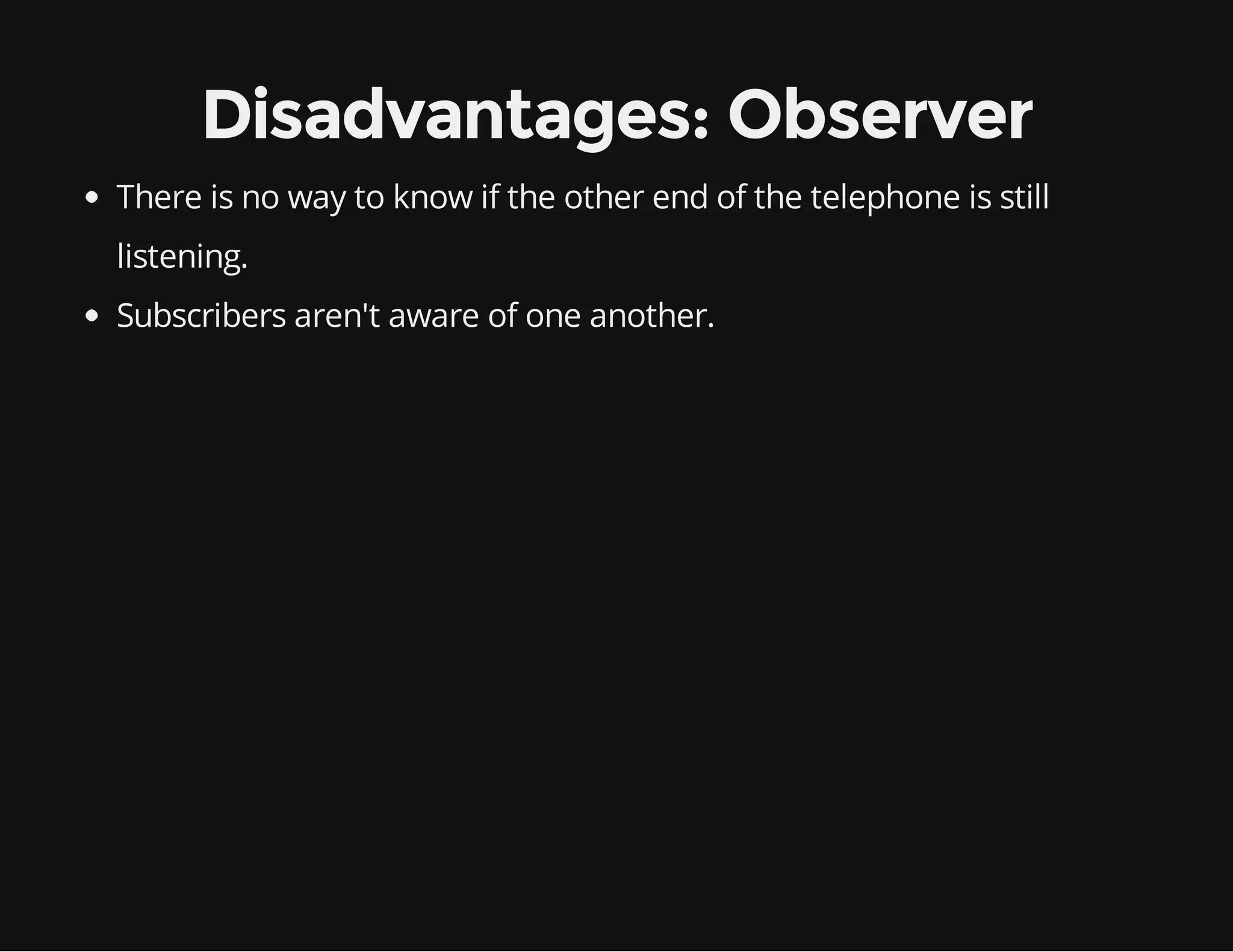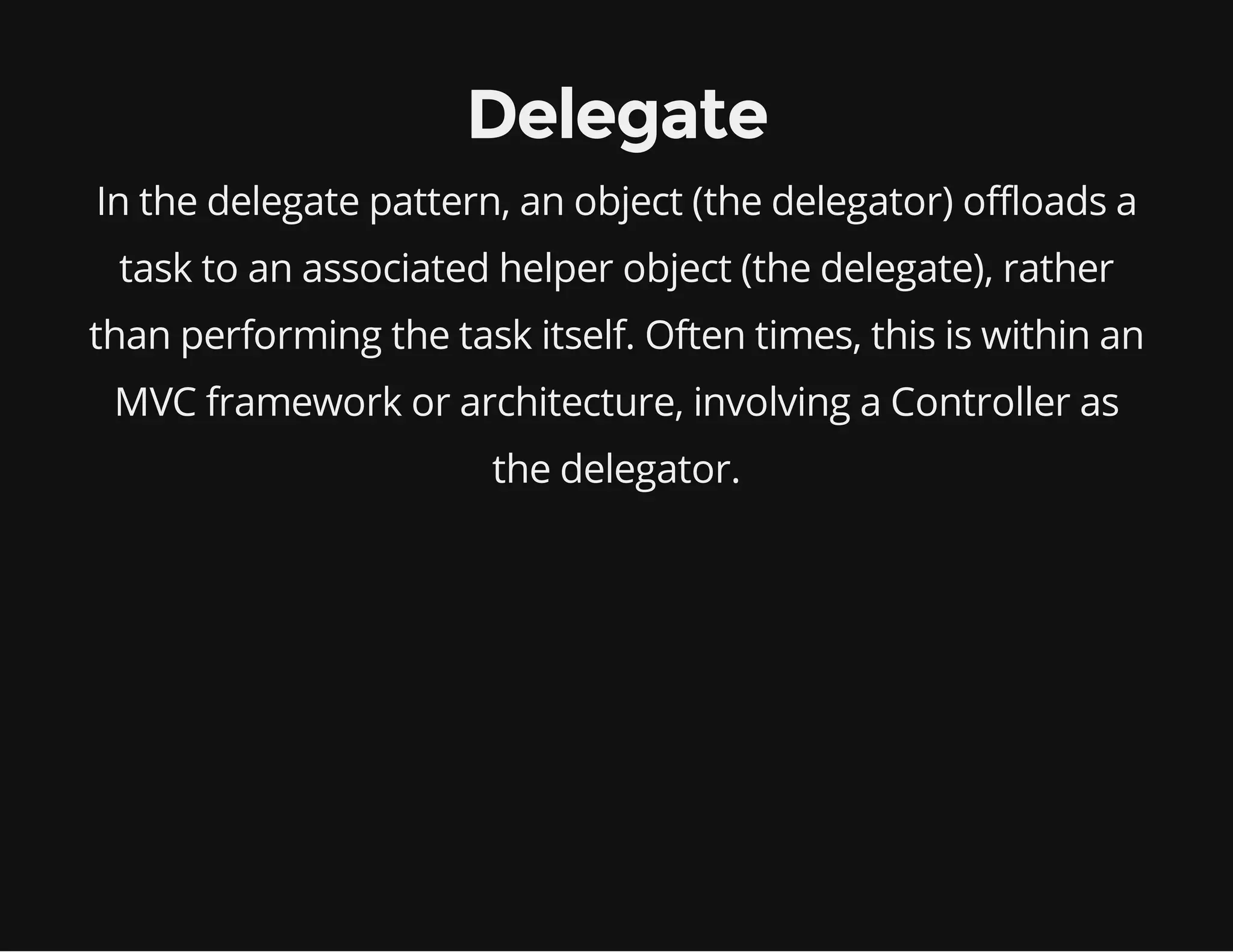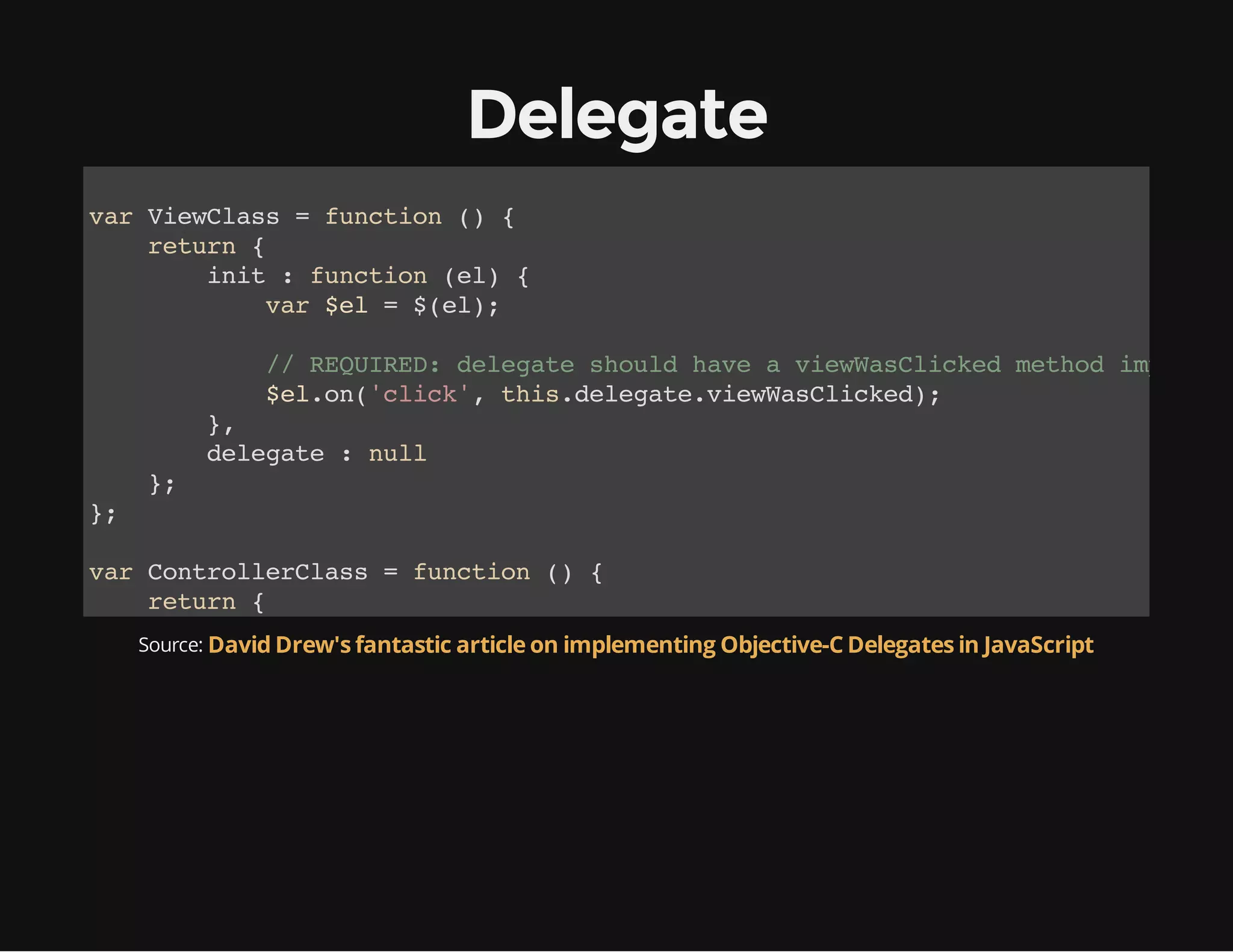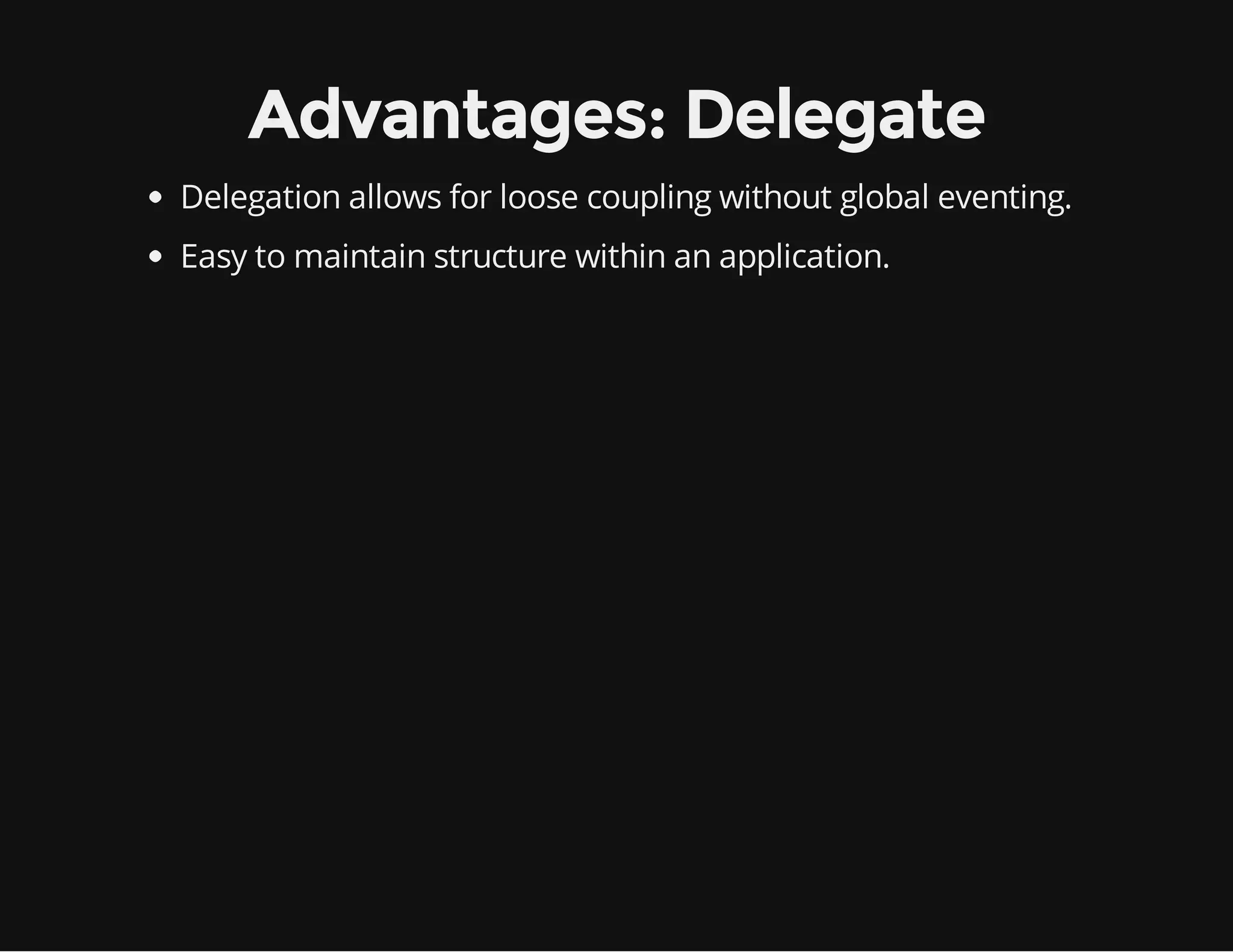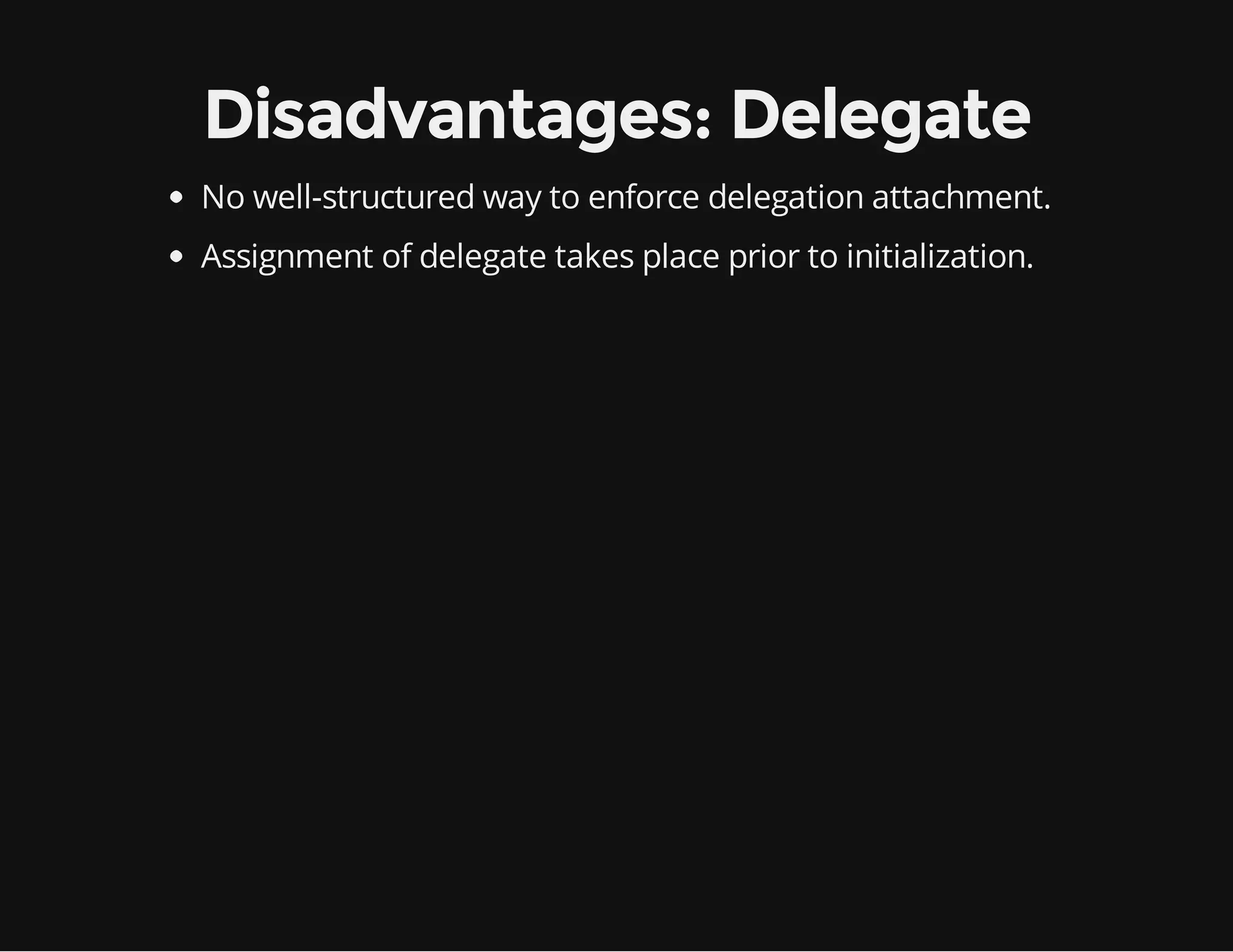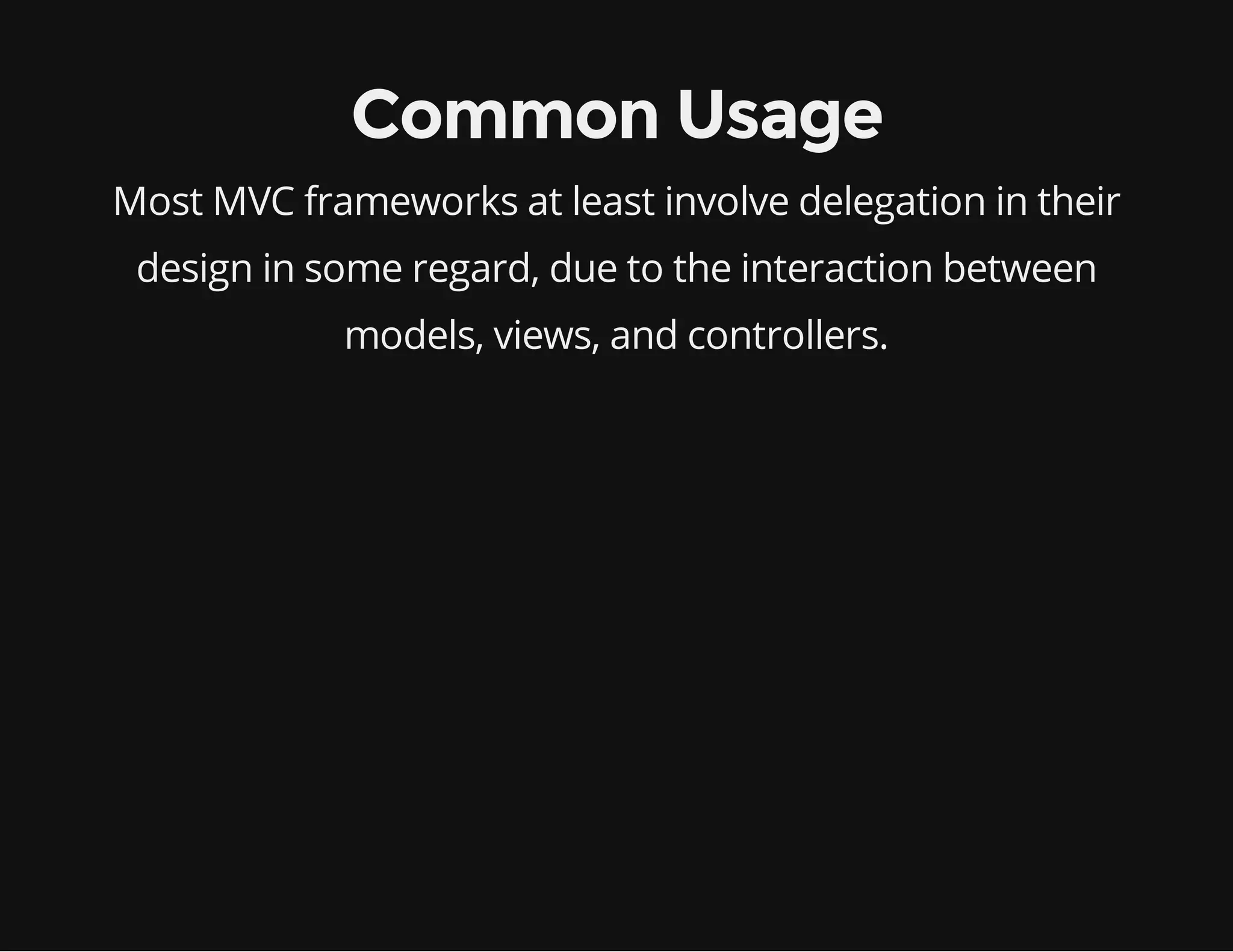The document outlines various JavaScript design patterns, emphasizing their reusability and modularity for better code maintainability. It discusses several common patterns such as Singleton, Factory, Observer, Command, and Module/Revealing Module, along with their definitions, advantages, disadvantages, and typical usage scenarios. Each pattern serves as a tool in a developer's toolbox, enhancing code structure and facilitating communication among developers.



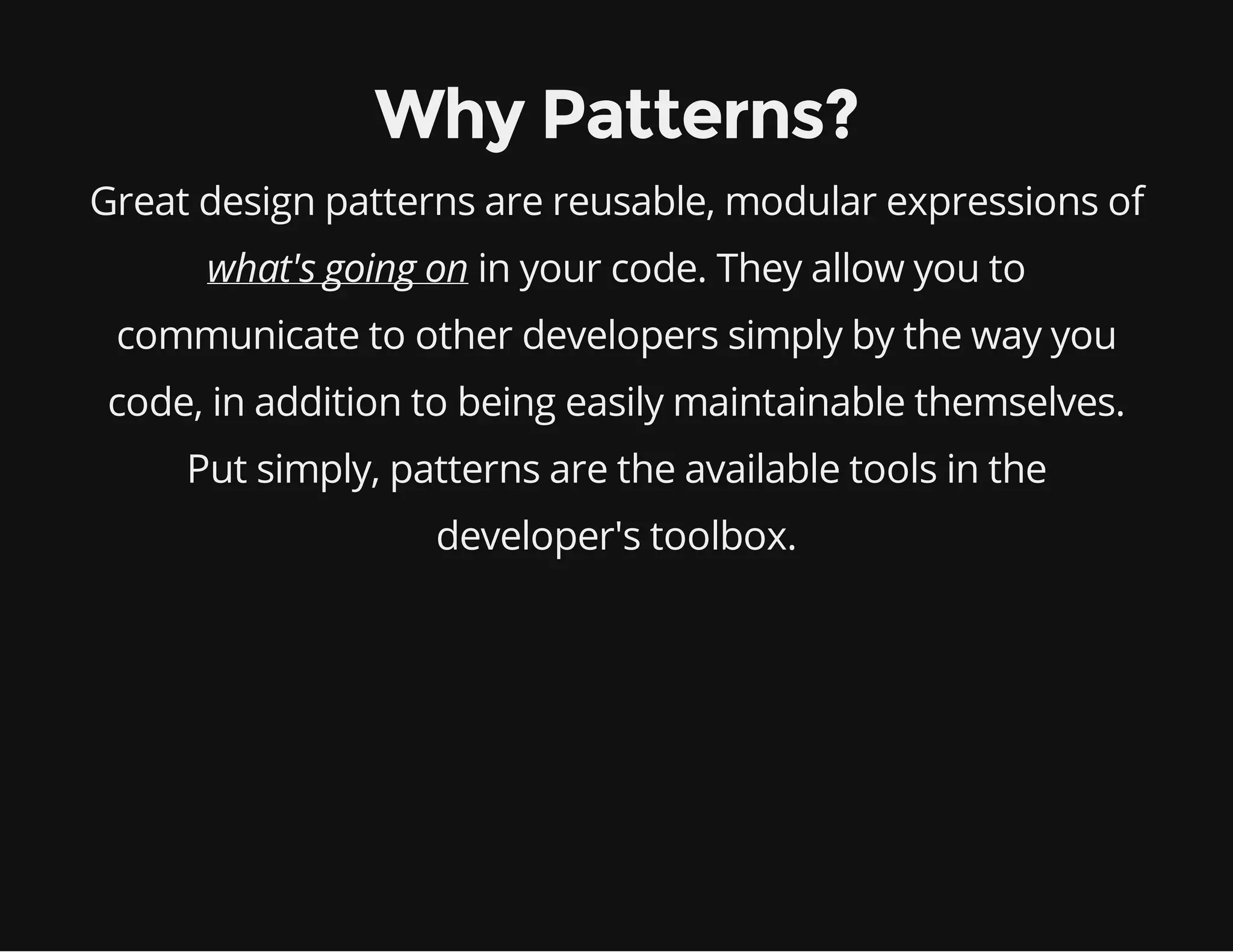
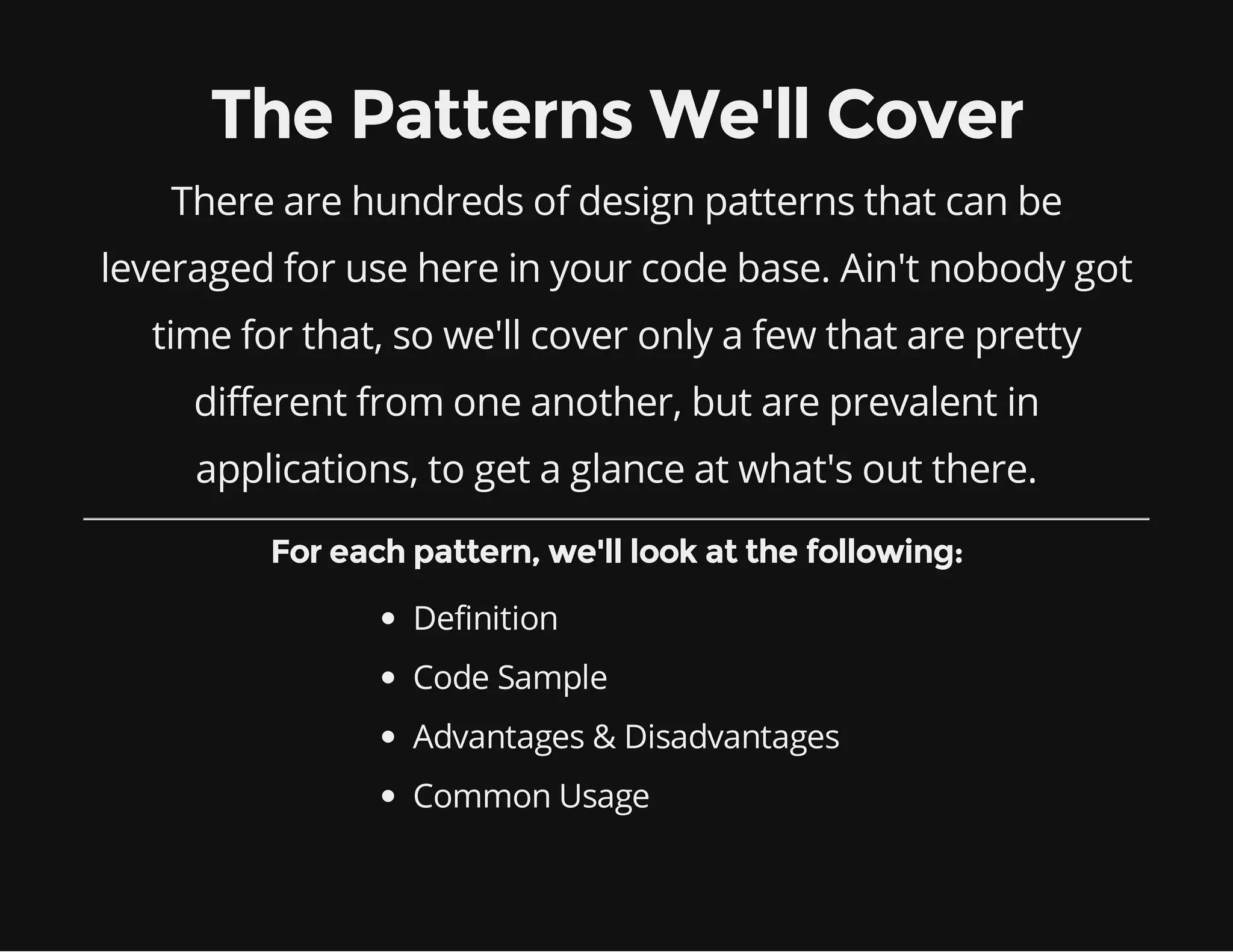


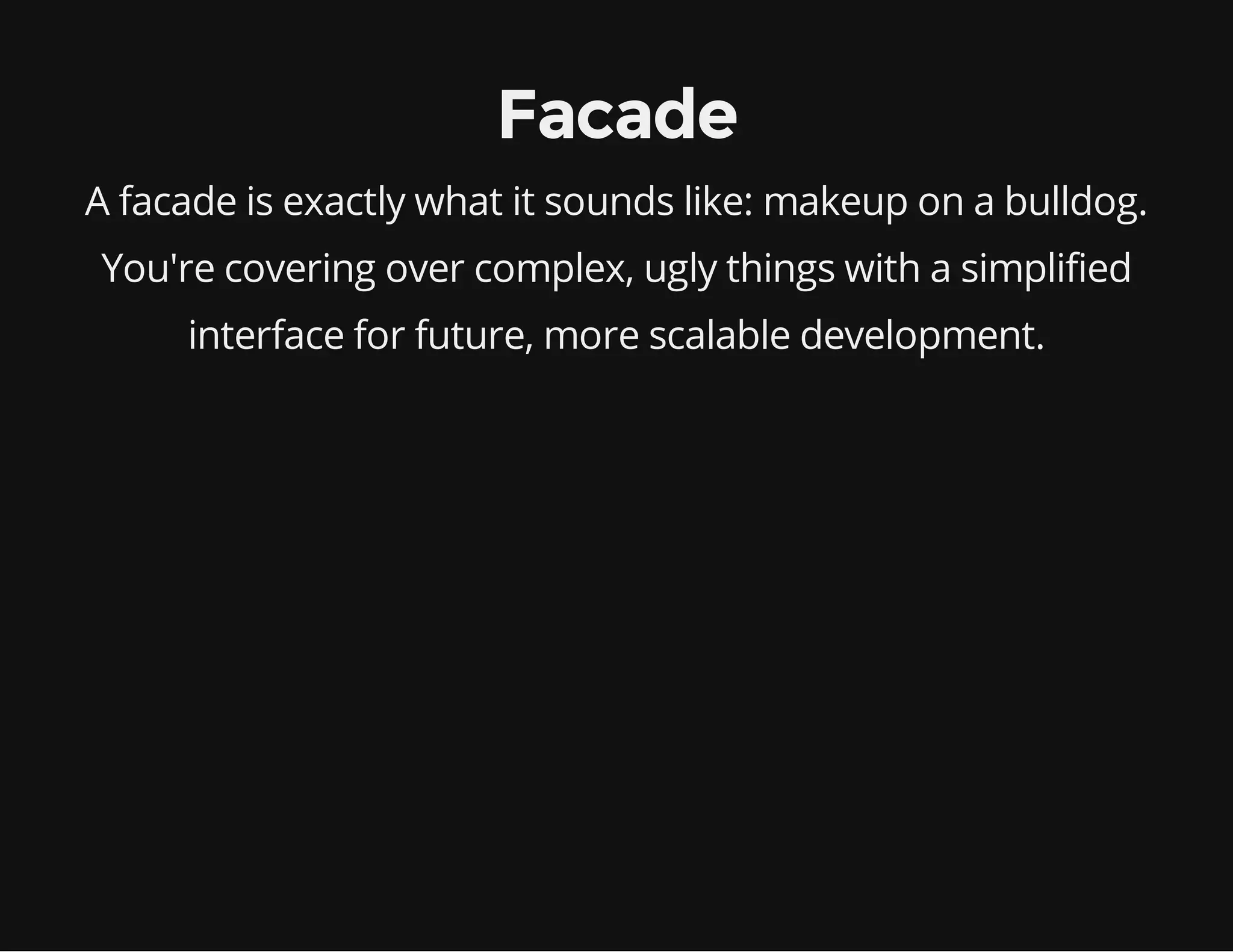
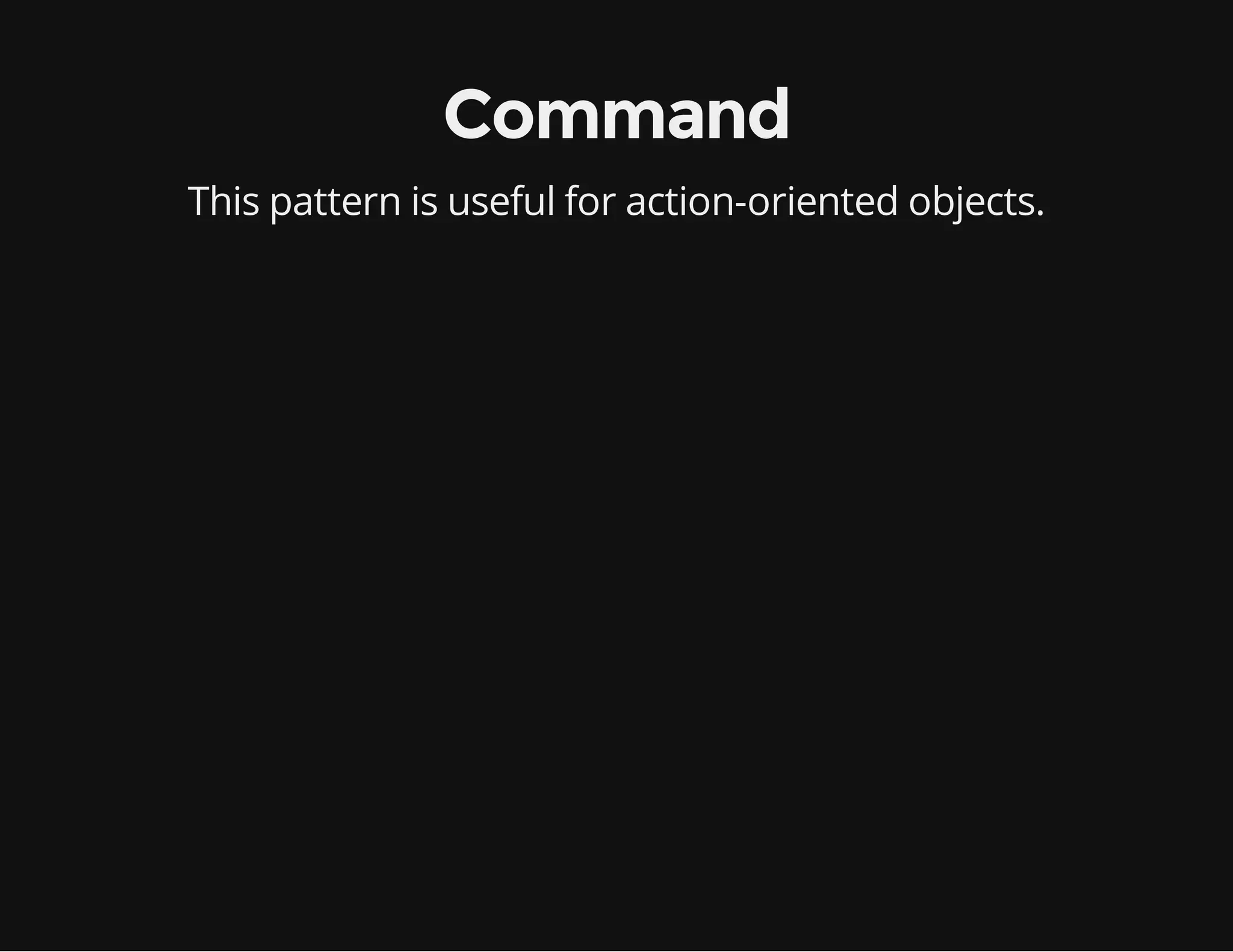
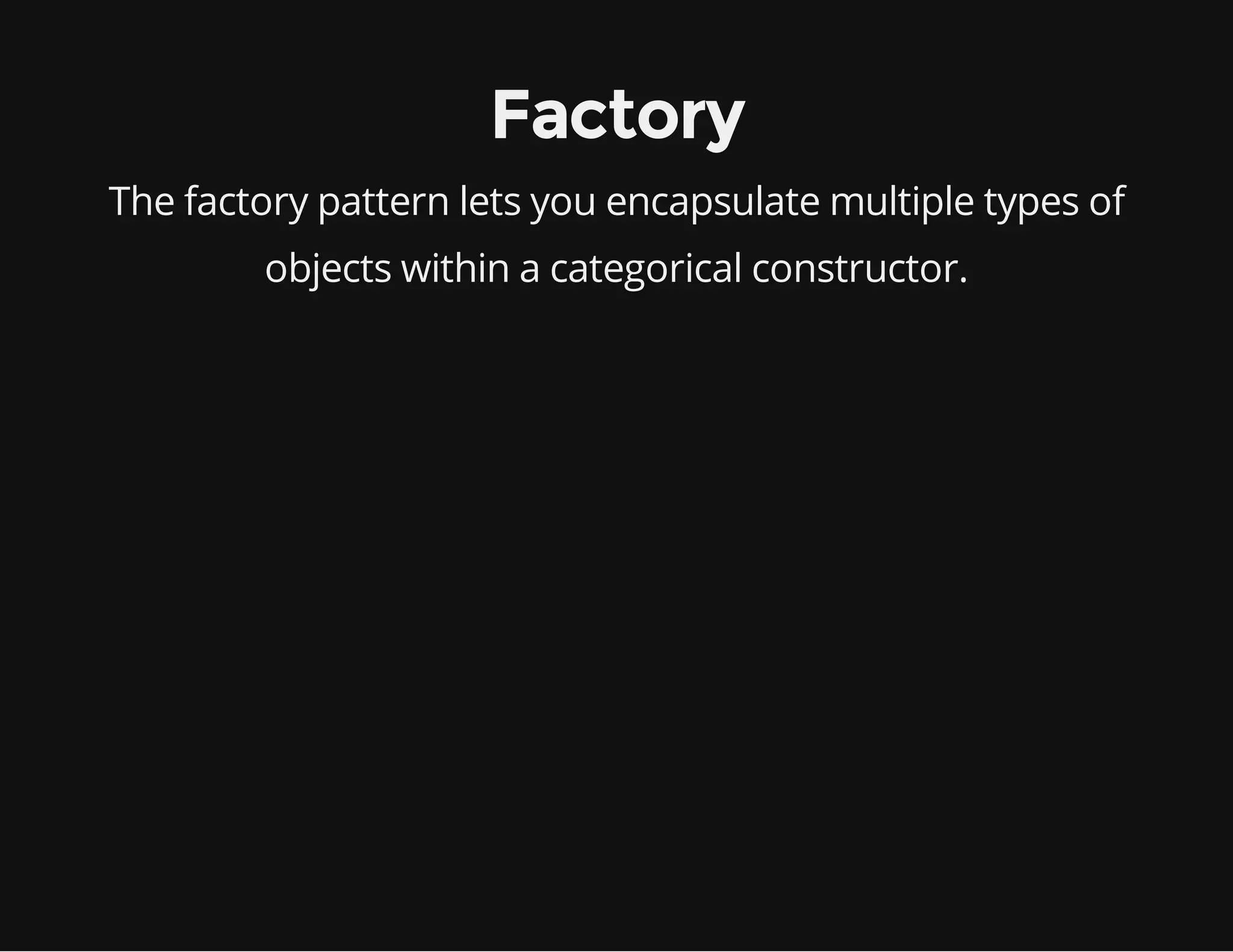
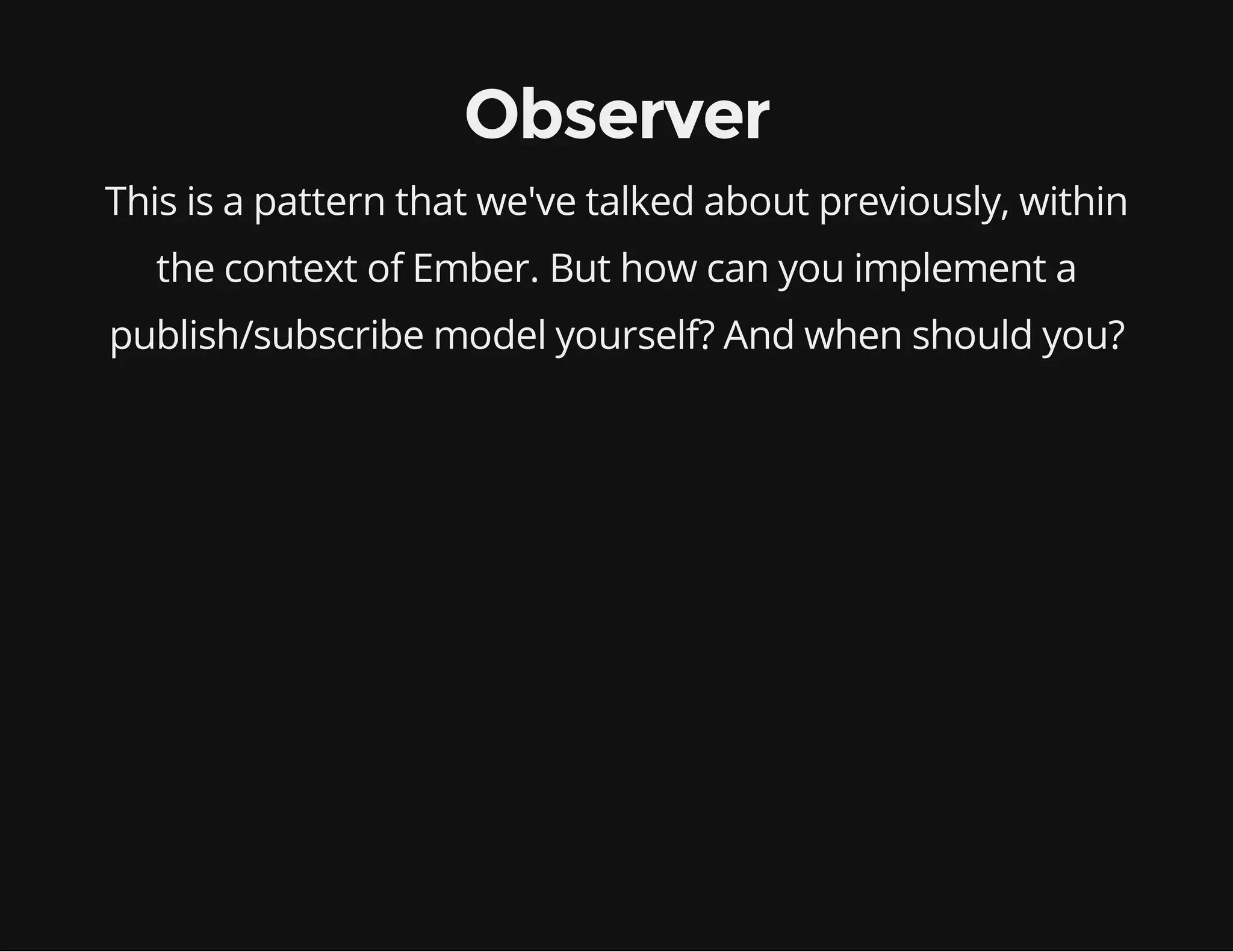
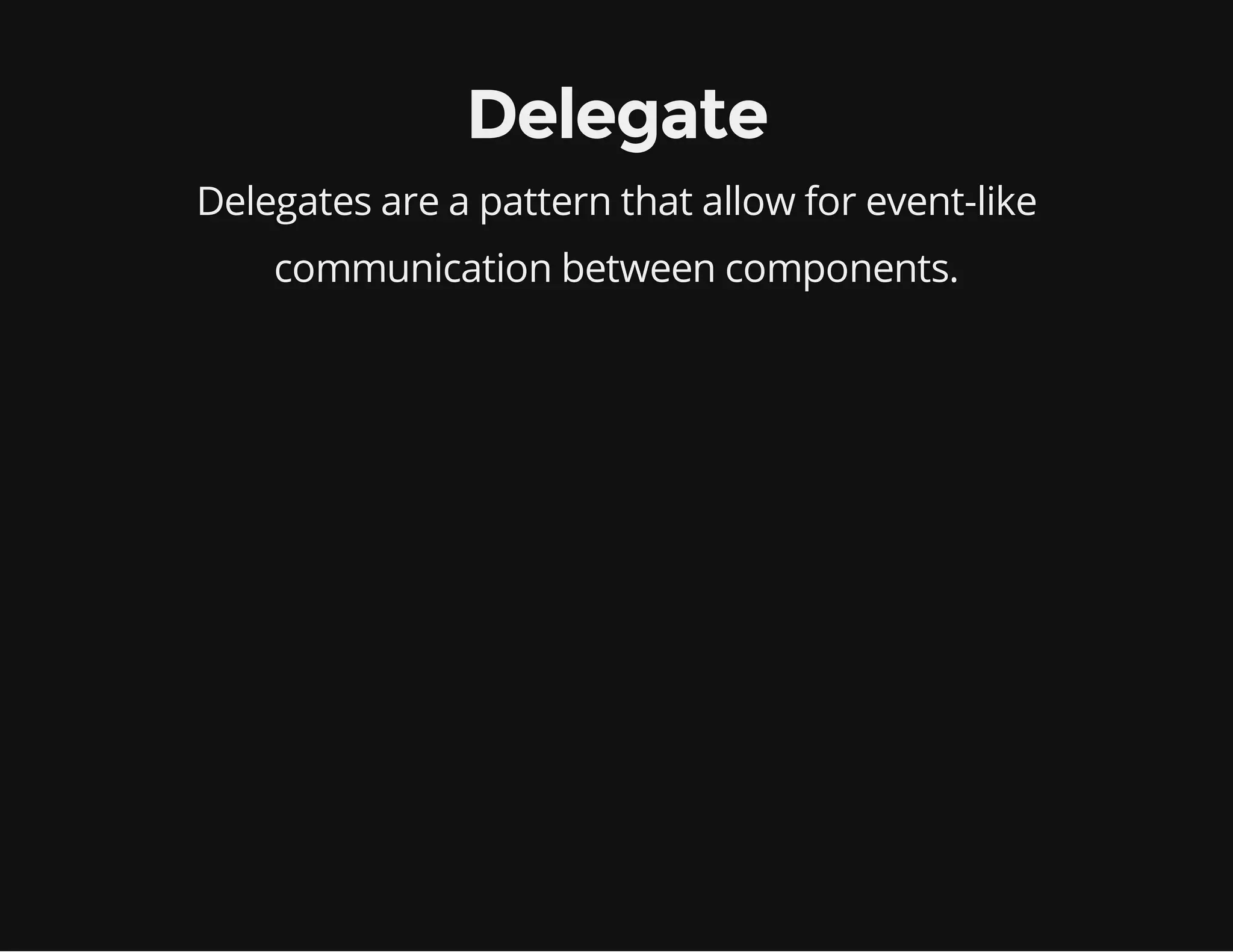
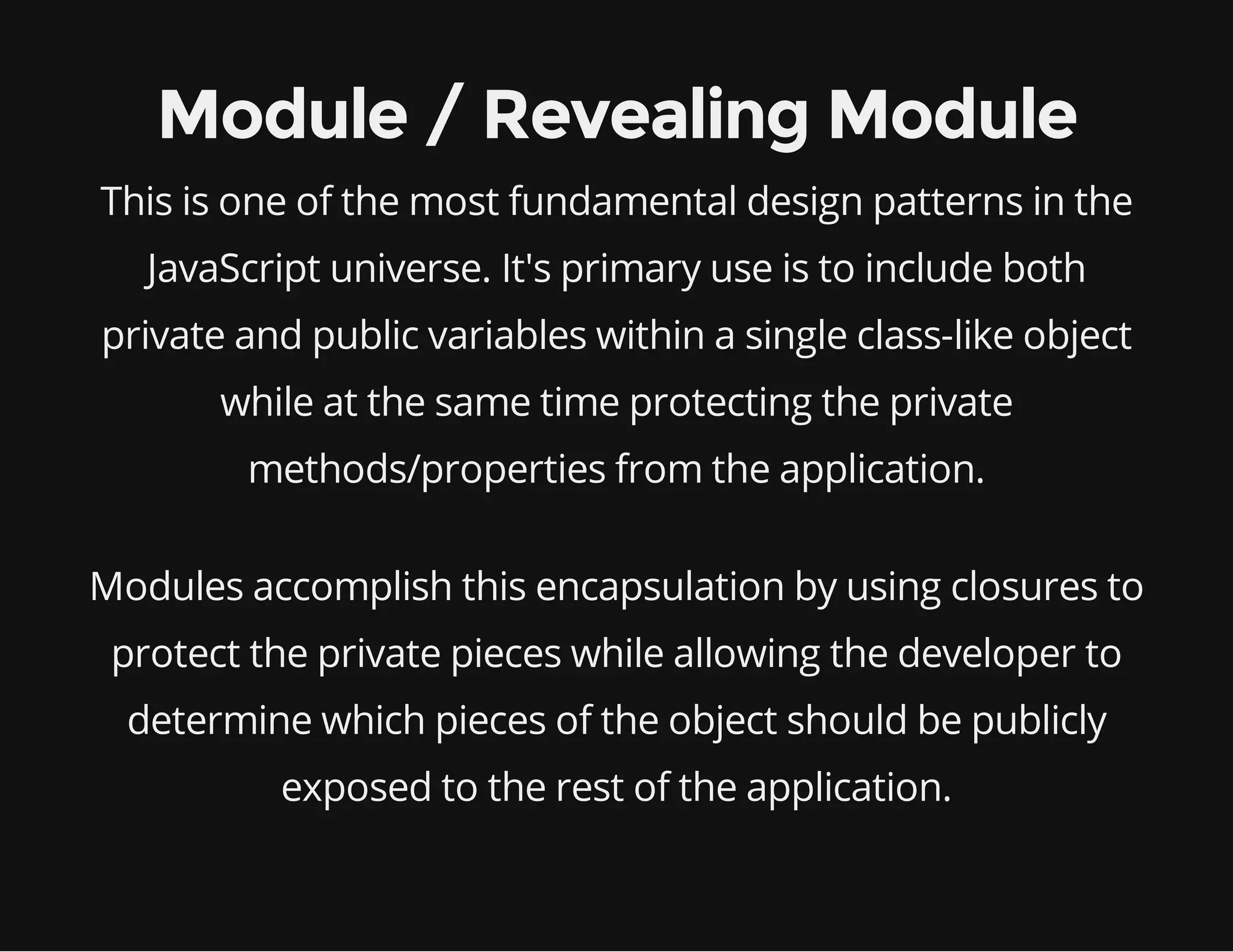
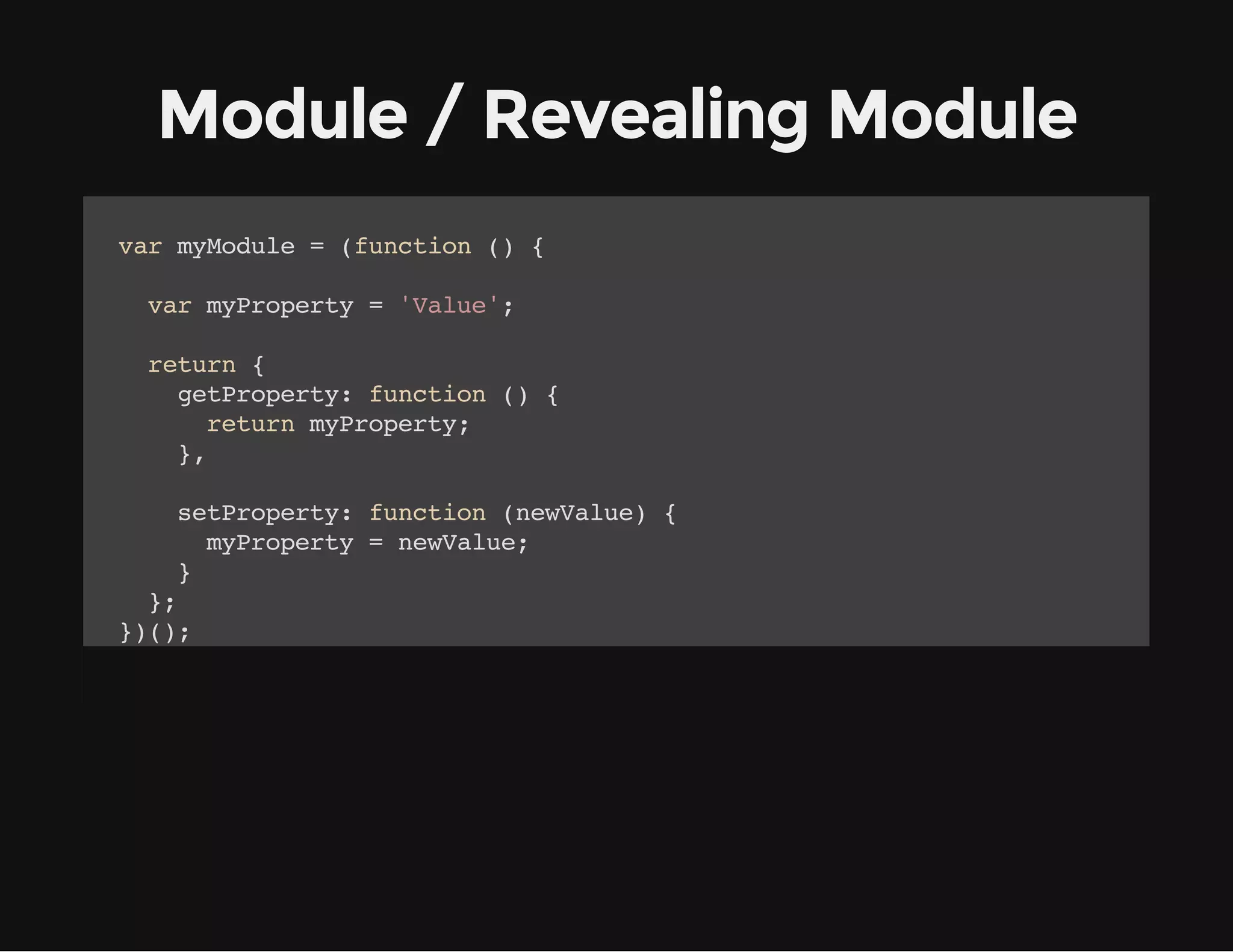

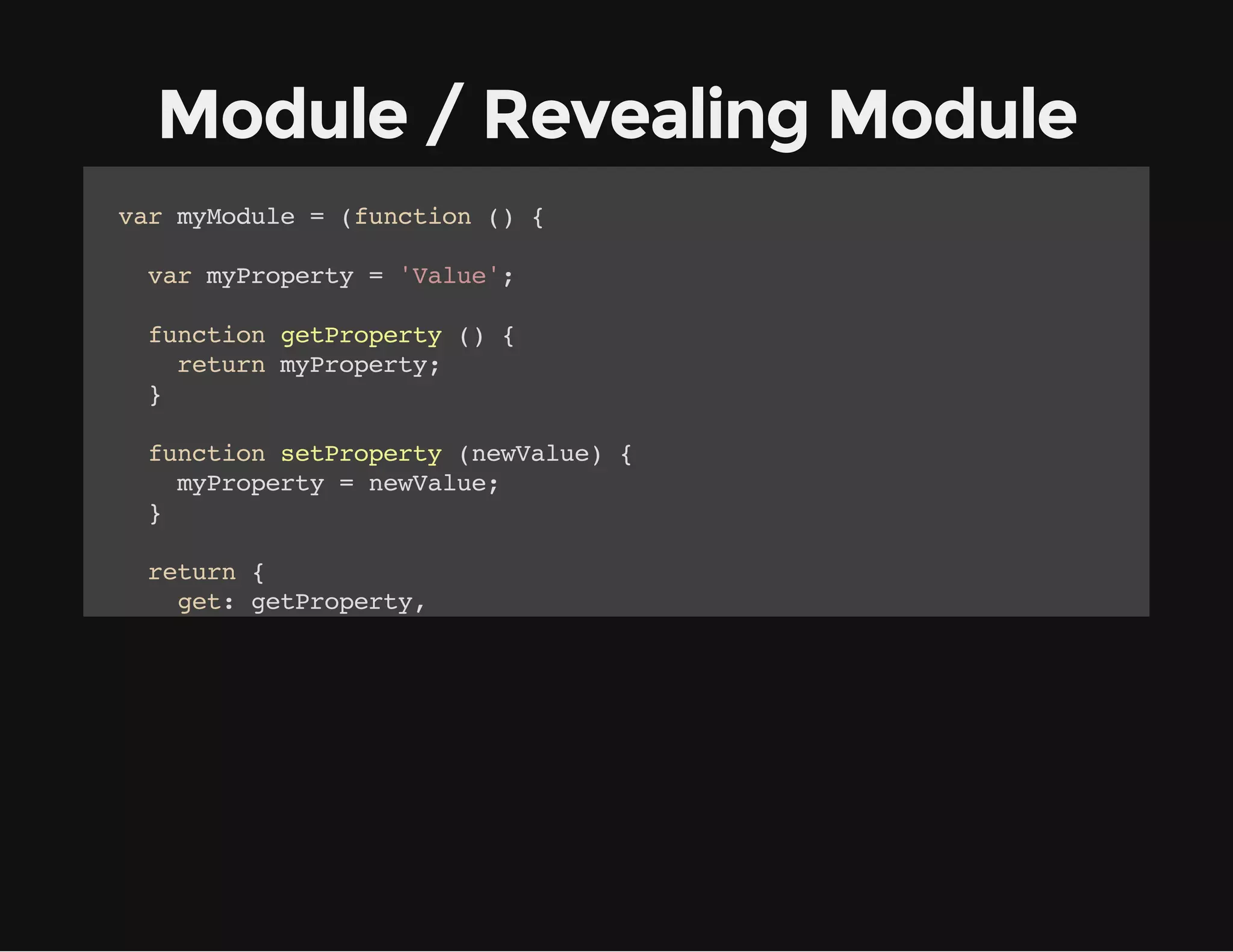
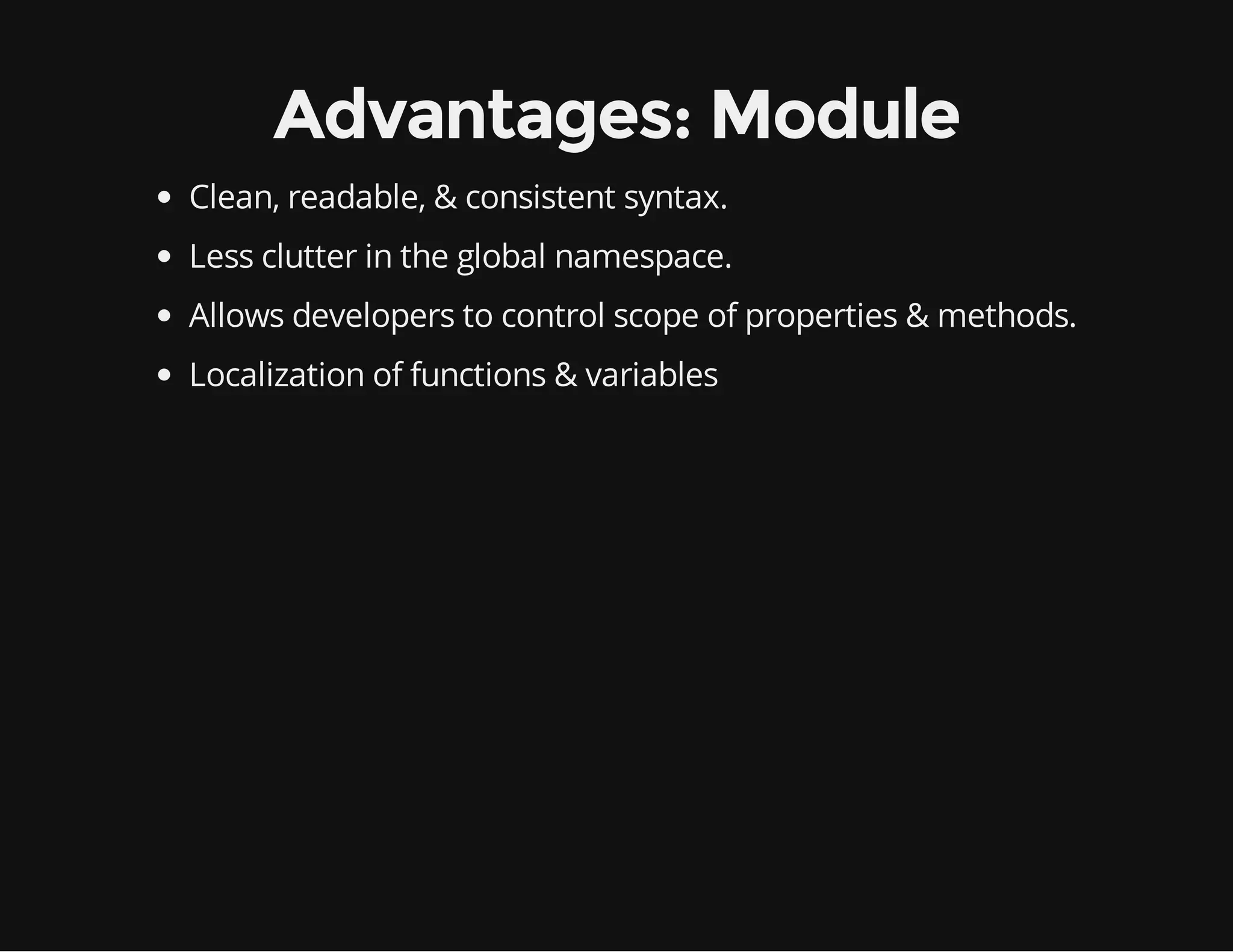
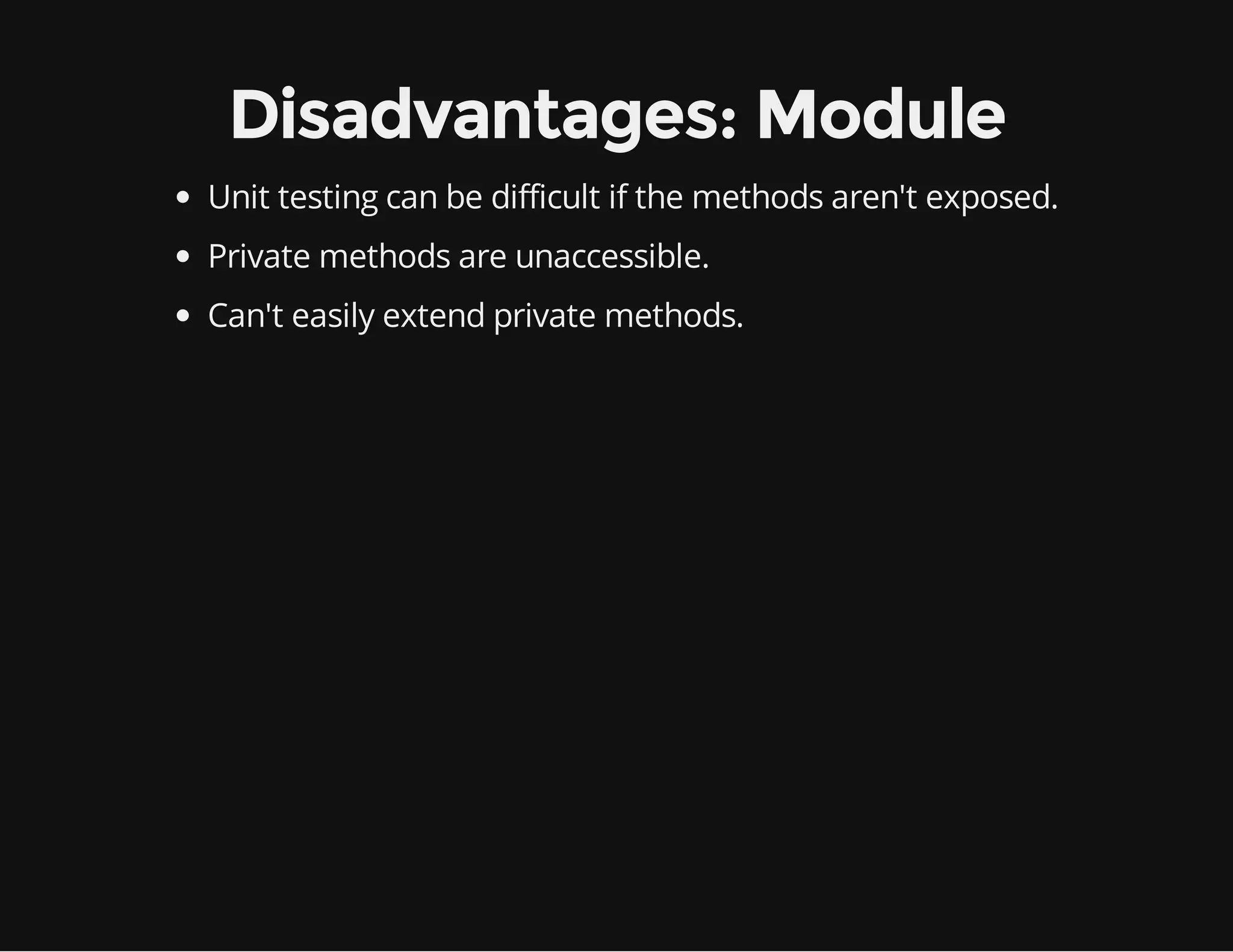

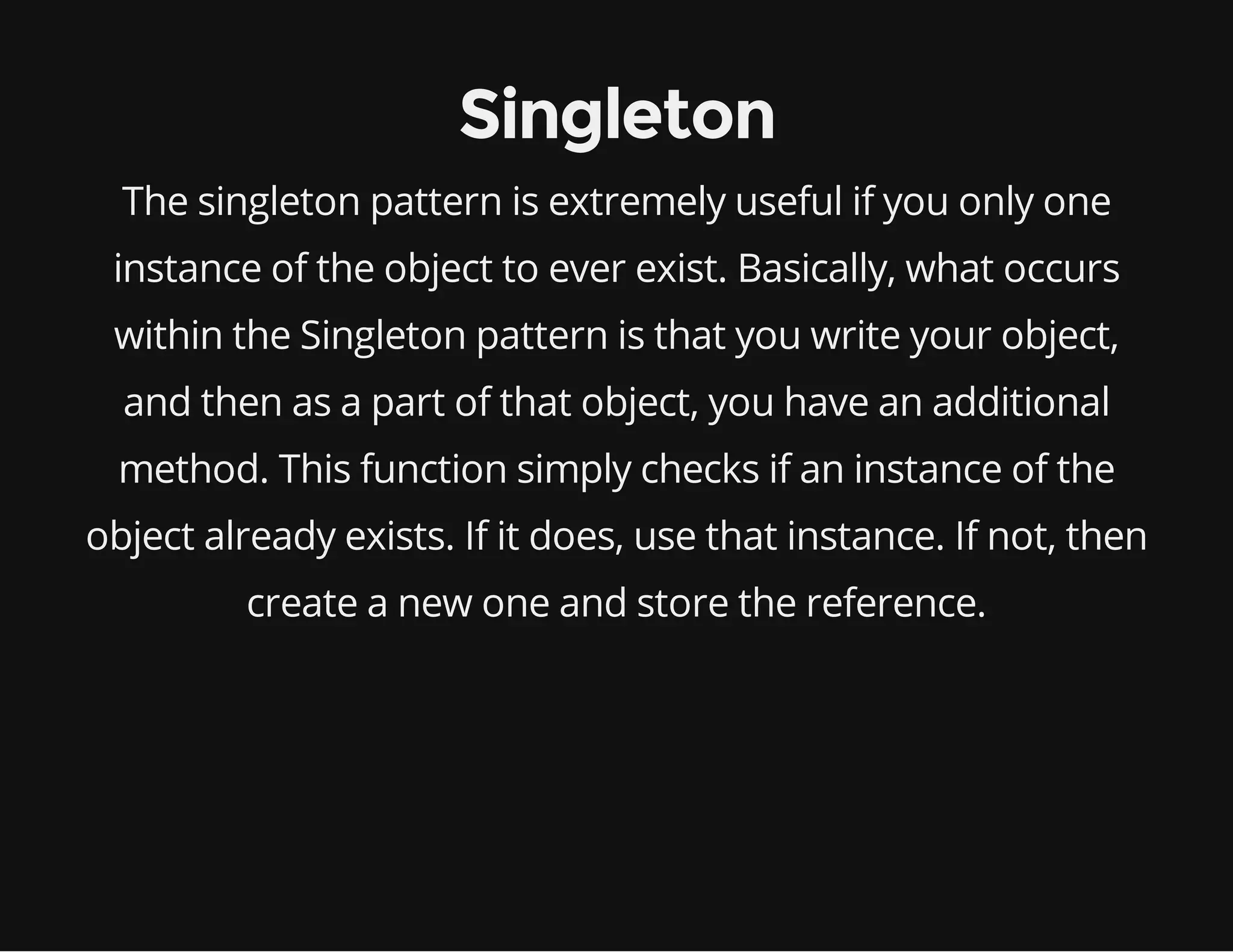
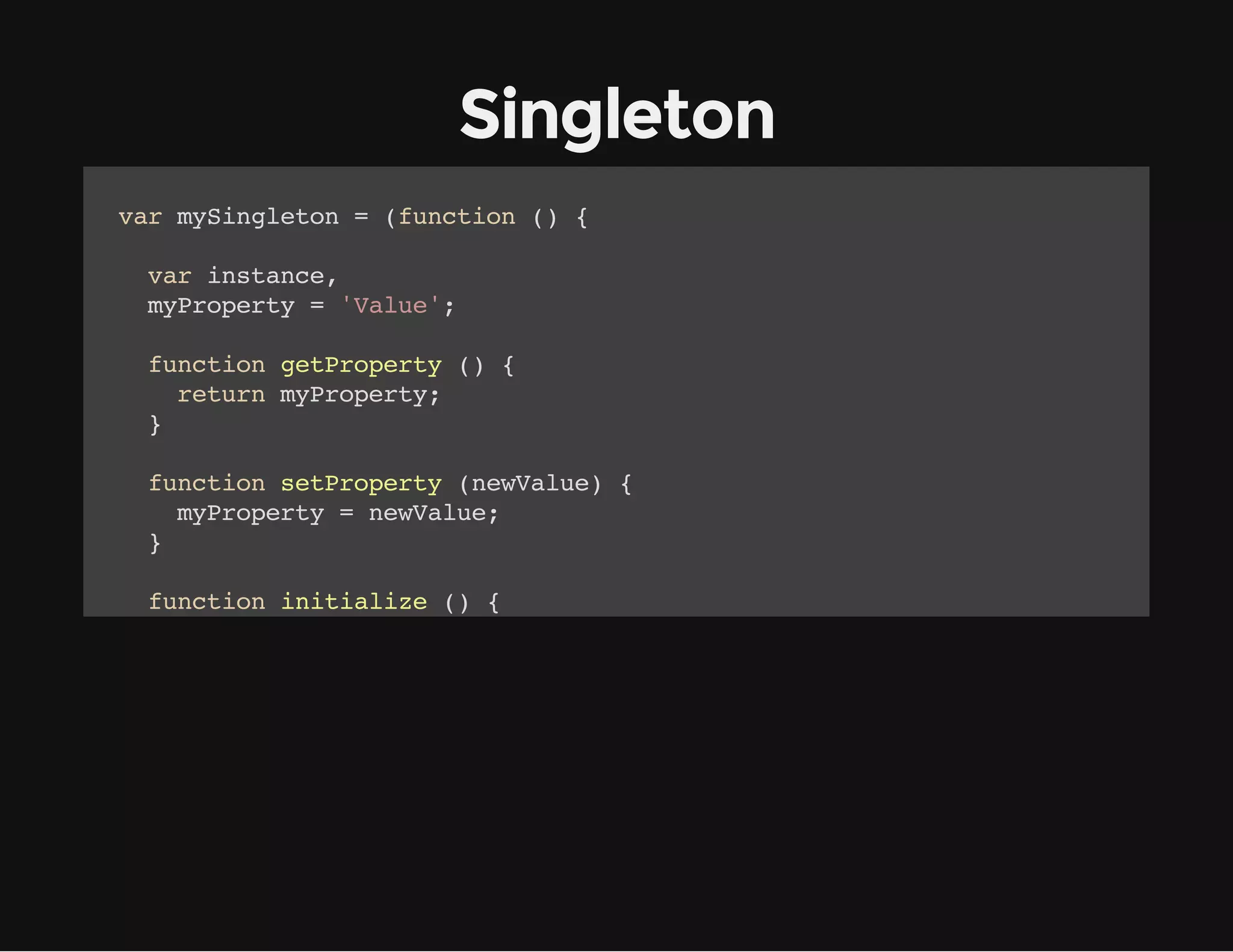



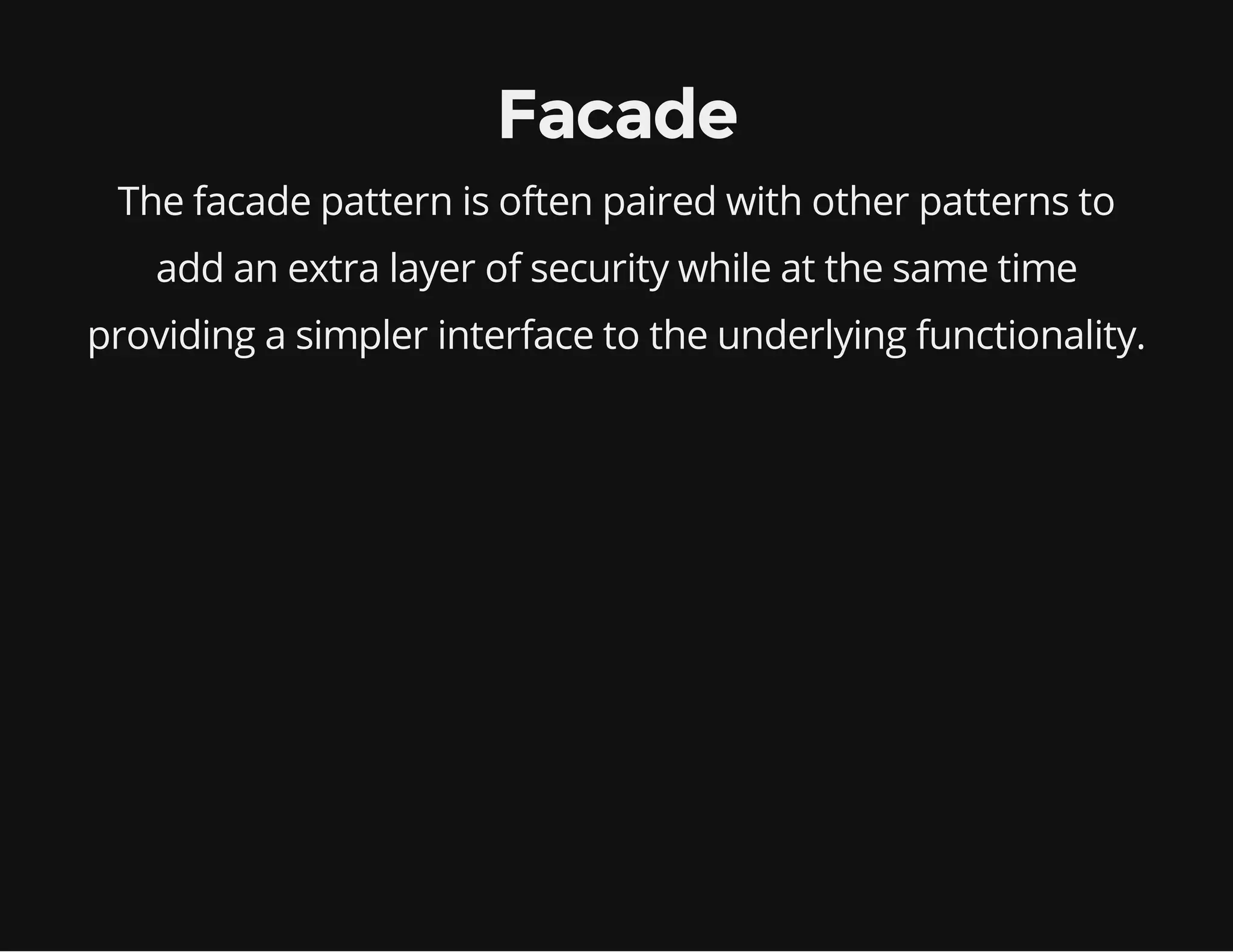
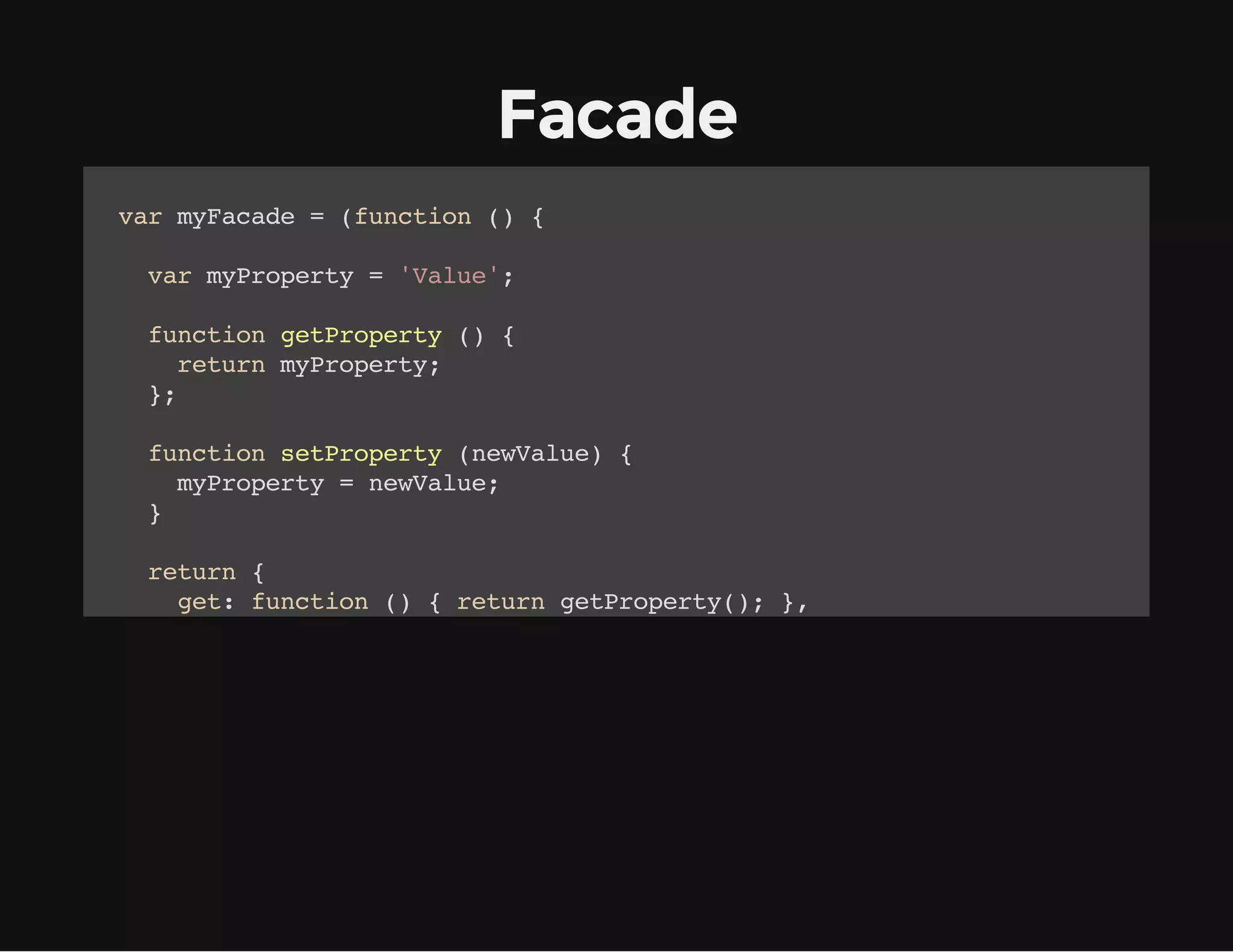
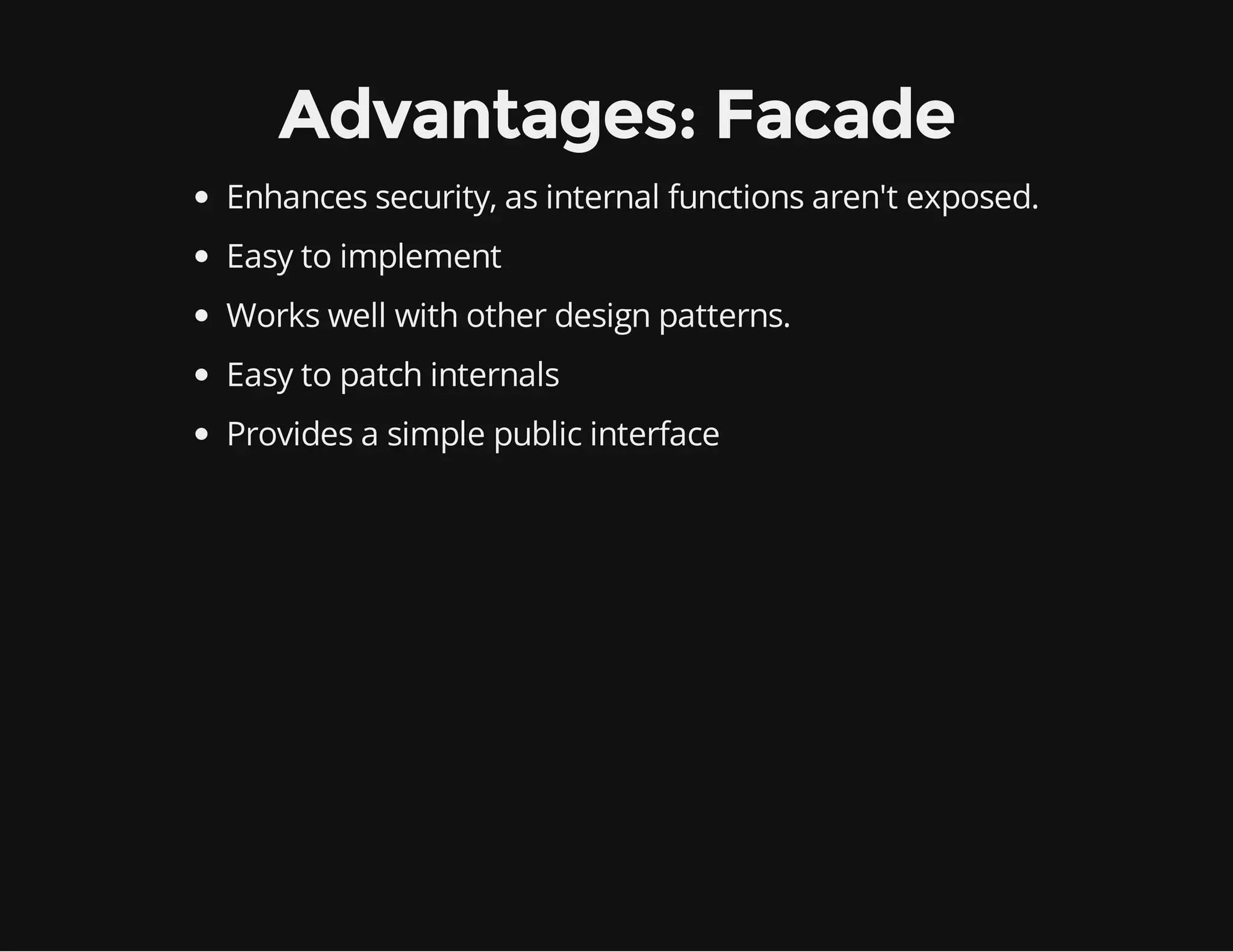
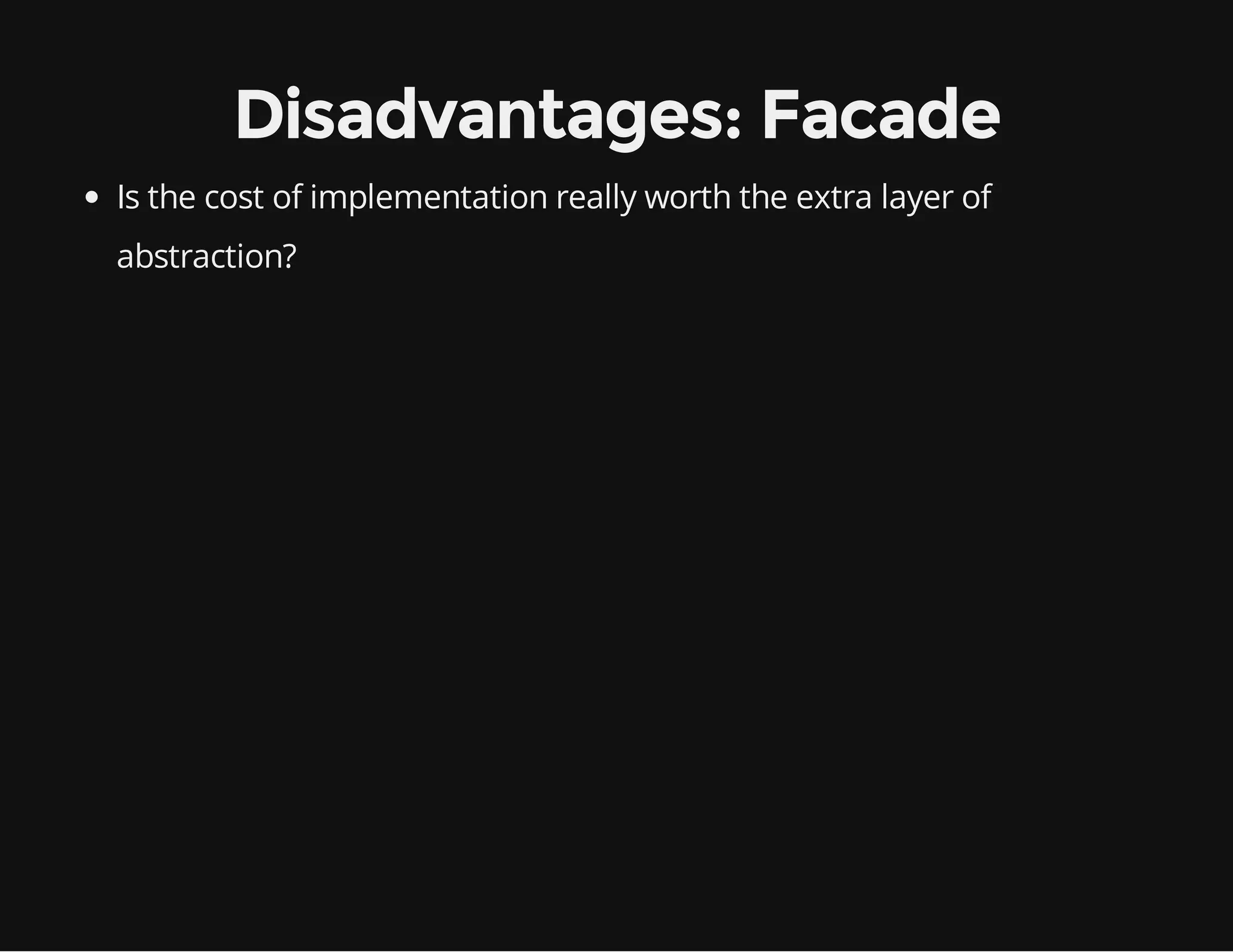
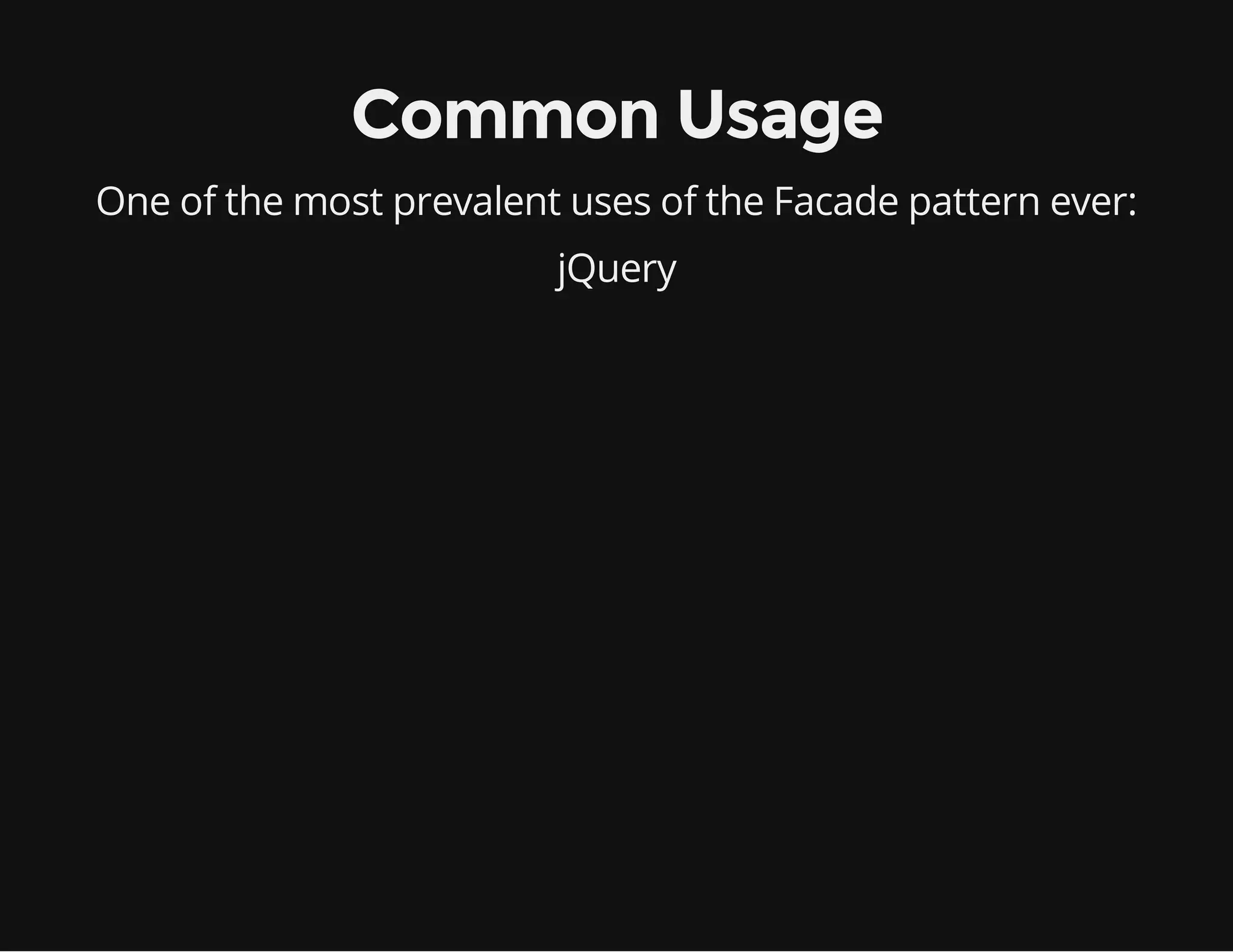
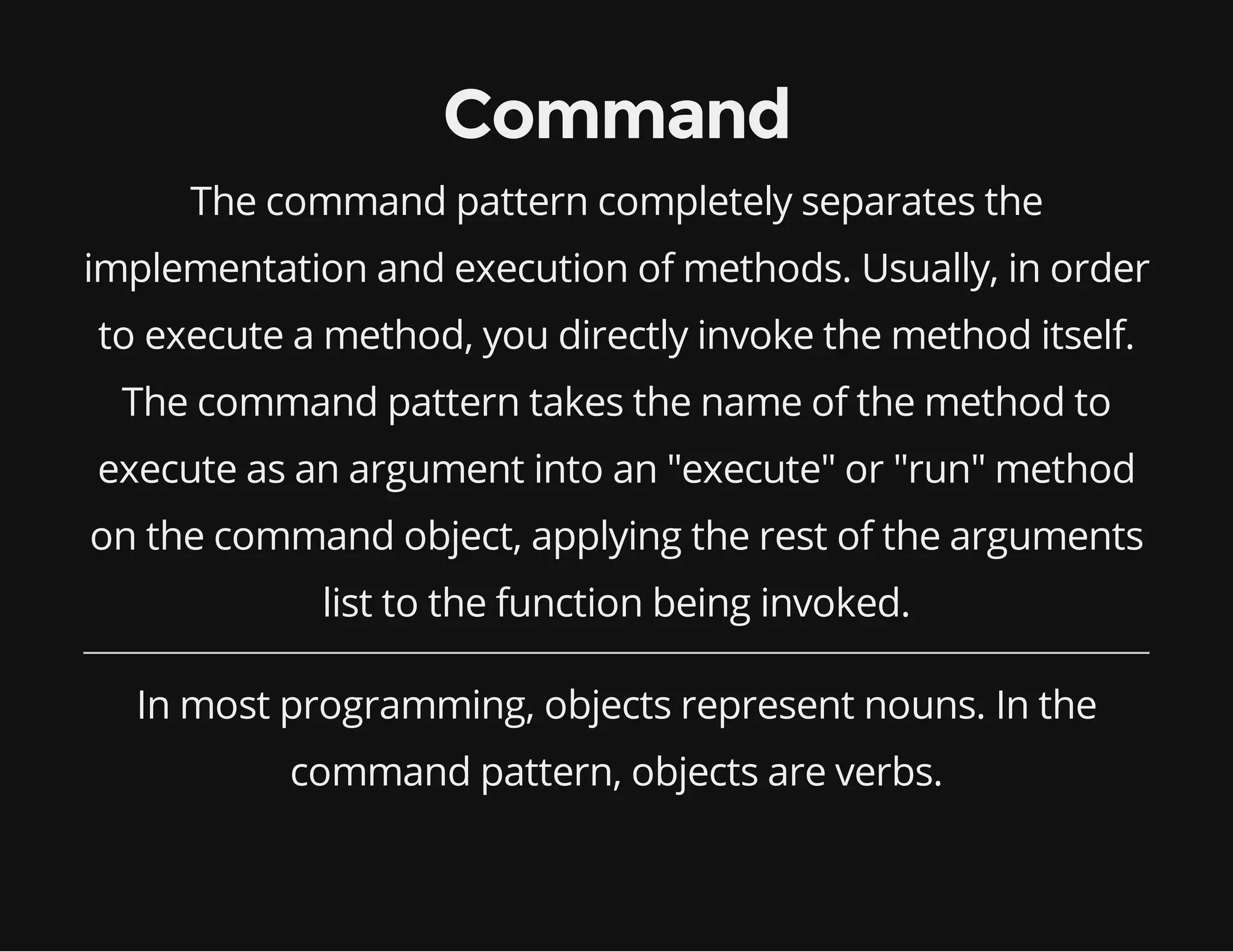
![Command
vrmCmad={
a yomn
rqetaa fnto (d atiue {
eusDt: ucin i, trbt)
rtr 'aaatiue'+atiue+'hsbe rqetdfrojc '
eun Dt trbt
trbt
a en euse o bet
}
,
ceraa fnto (d atiue {
laDt: ucin i, trbt)
rtr 'h dt atiue'+atiue+'hsbe rstfrojc '
eun Te aa trbt
trbt
a en ee o bet
}
}
mCmadrn=fnto (omn){
yomn.u
ucin cmad
rtr mCmadcmadrqet(omn.d cmadatiue
eun yomn[omn.eus]cmadi, omn.trbt)
}
;
/
*
Atraiey ternfnto cudlo lk ti,wihwudps eta
lentvl, h u ucin ol ok ie hs hc ol as xr
mCmadrn=fnto (omn){
yomn.u
ucin cmad
rtr mCmadcmad.pl(mCmad [.lc.alagmns 1)
eun yomn[omn]apy yomn, ]siecl(ruet, );
}
;
o fragmnls cmad,yucng ee smlr
r o ruetes omns o a o vn ipe:
mCmadrn=fnto (omn){
yomn.u
ucin cmad](https://image.slidesharecdn.com/javascriptdesignpatterns-131014165309-phpapp01/75/JavaScript-Design-Patterns-31-2048.jpg)
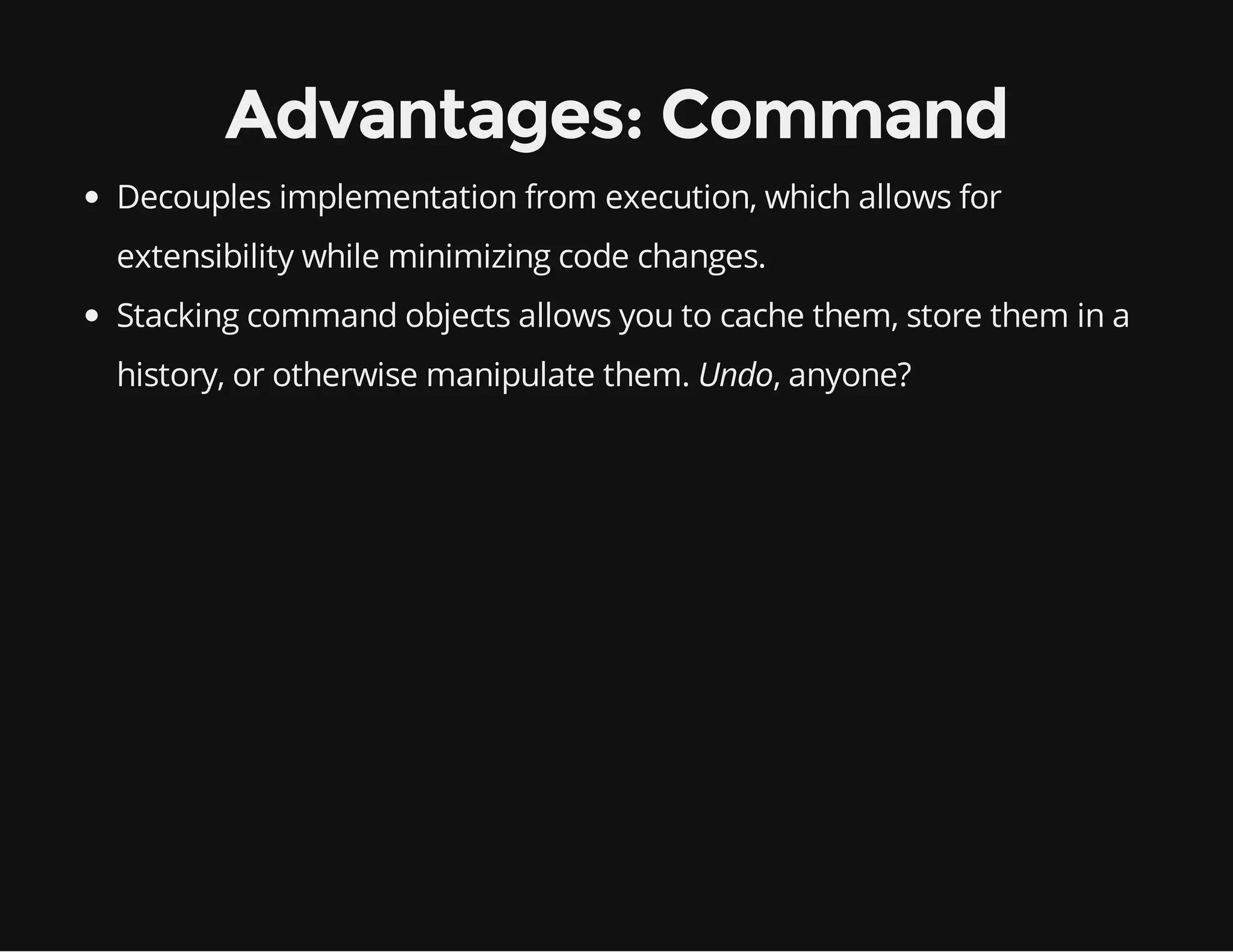

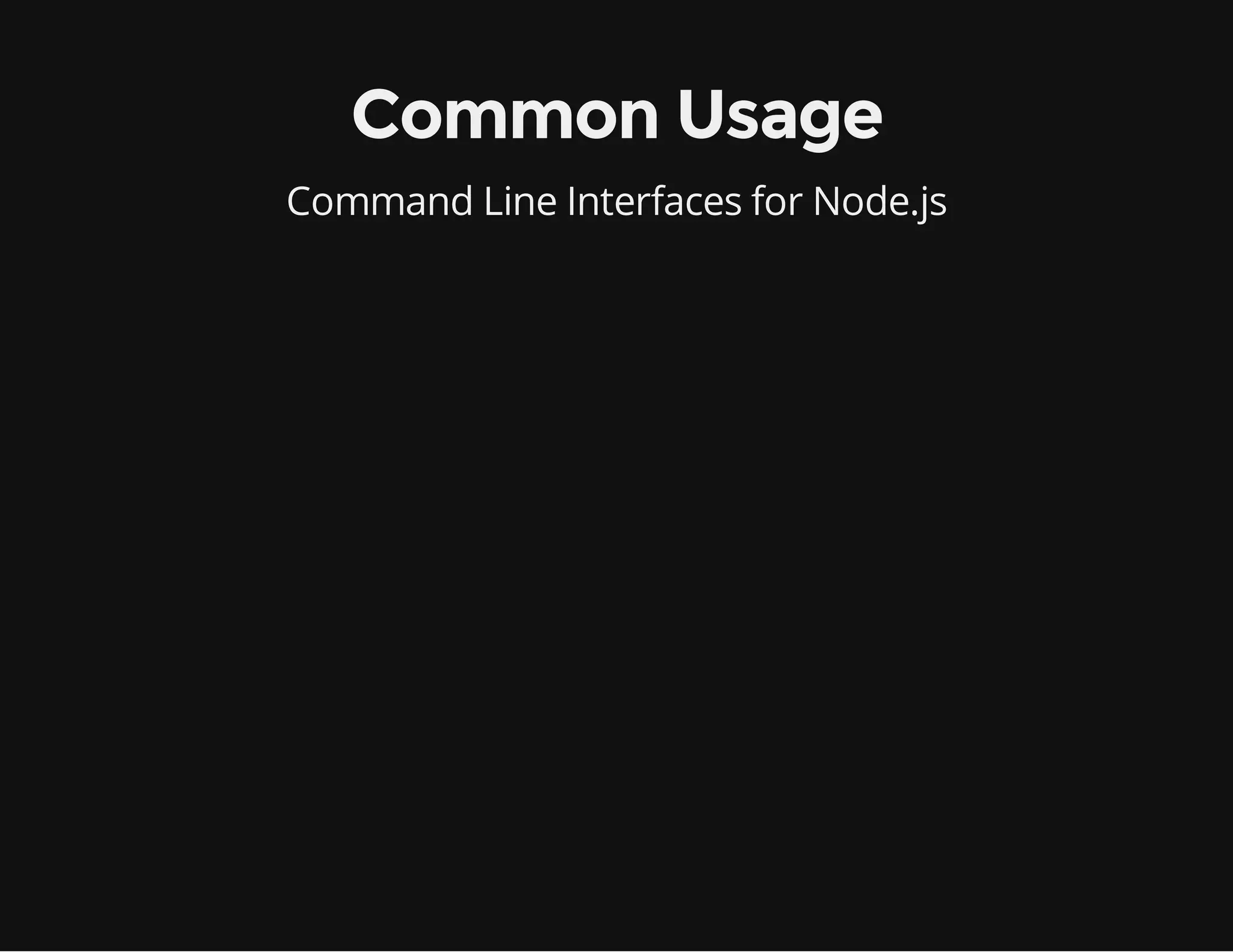
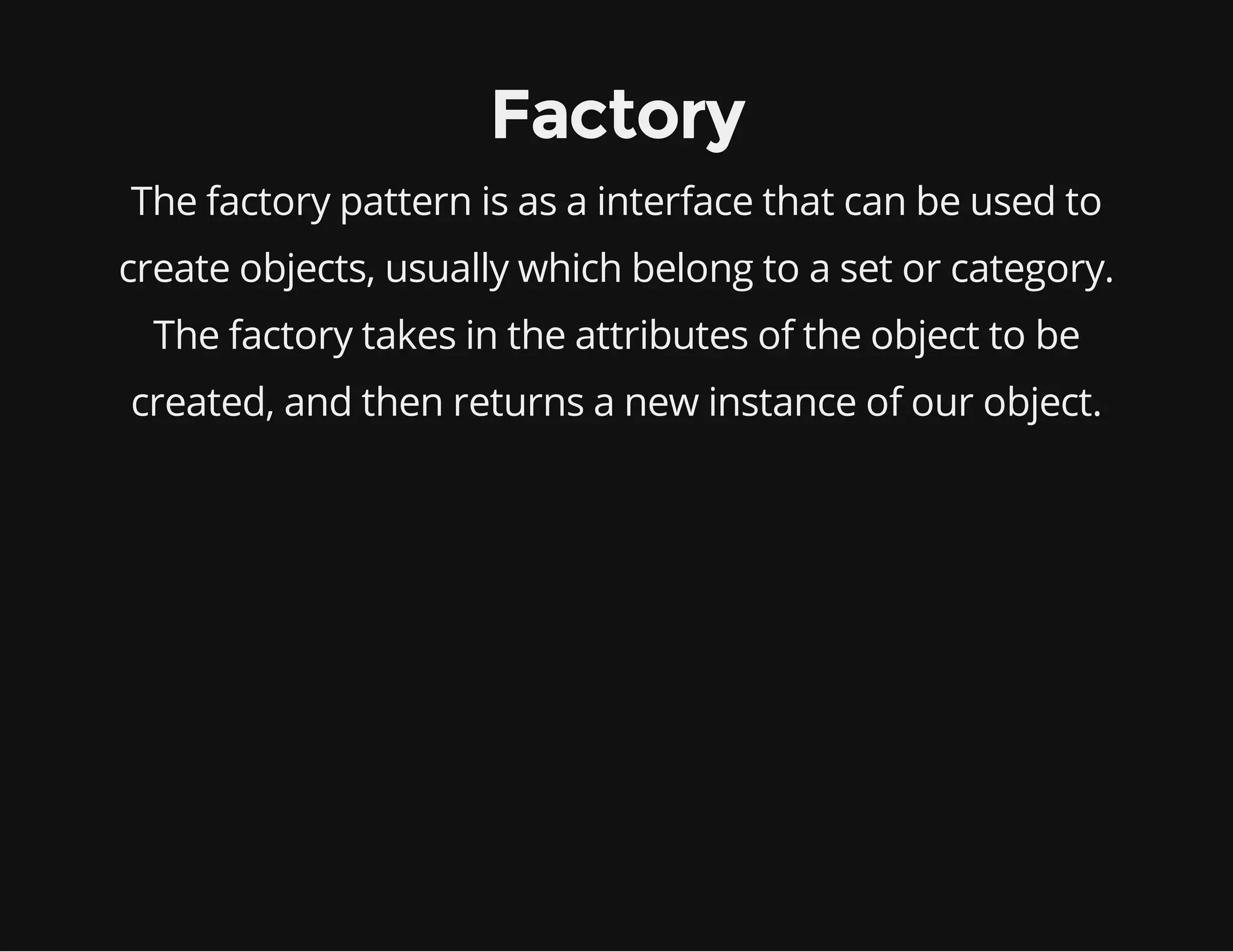
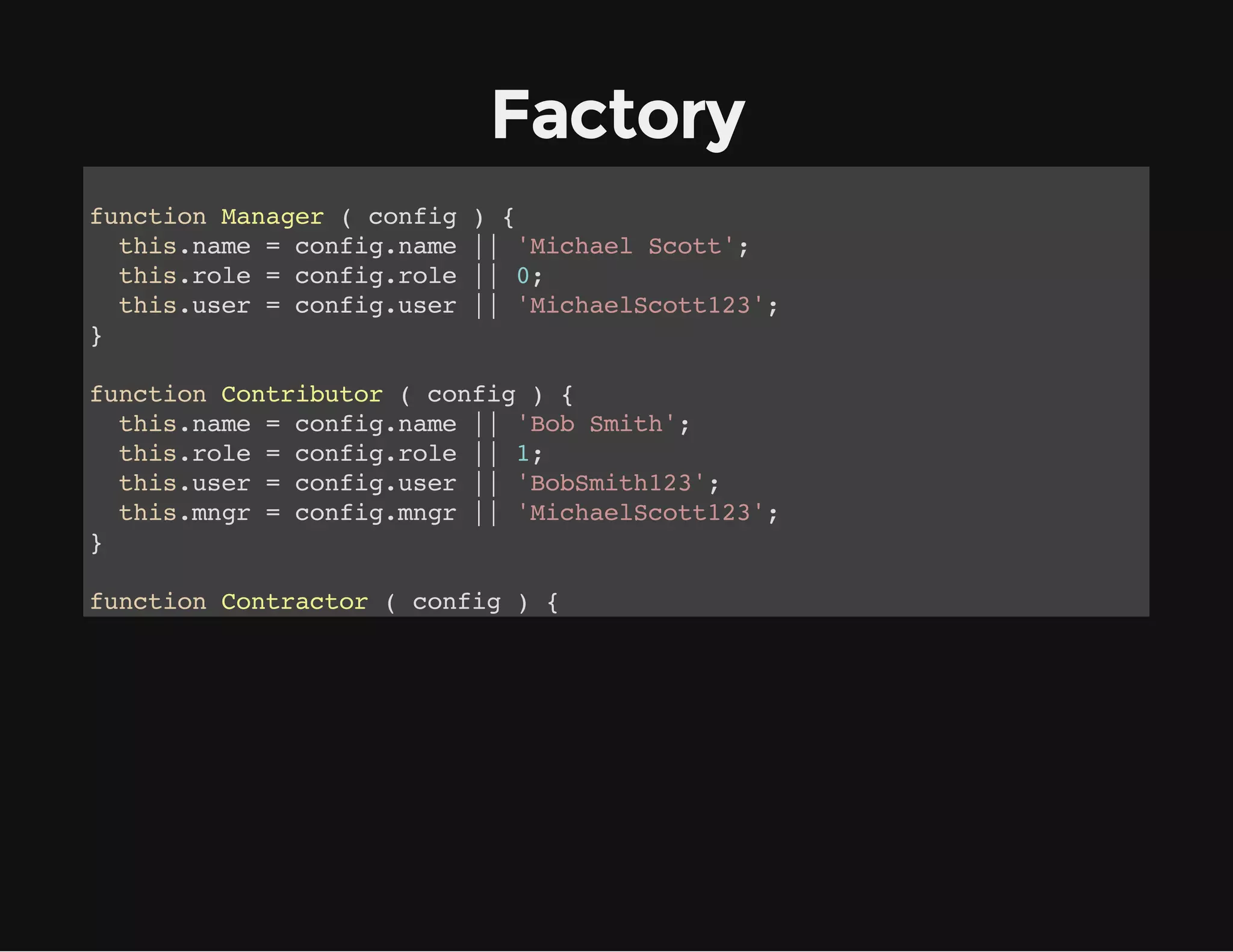
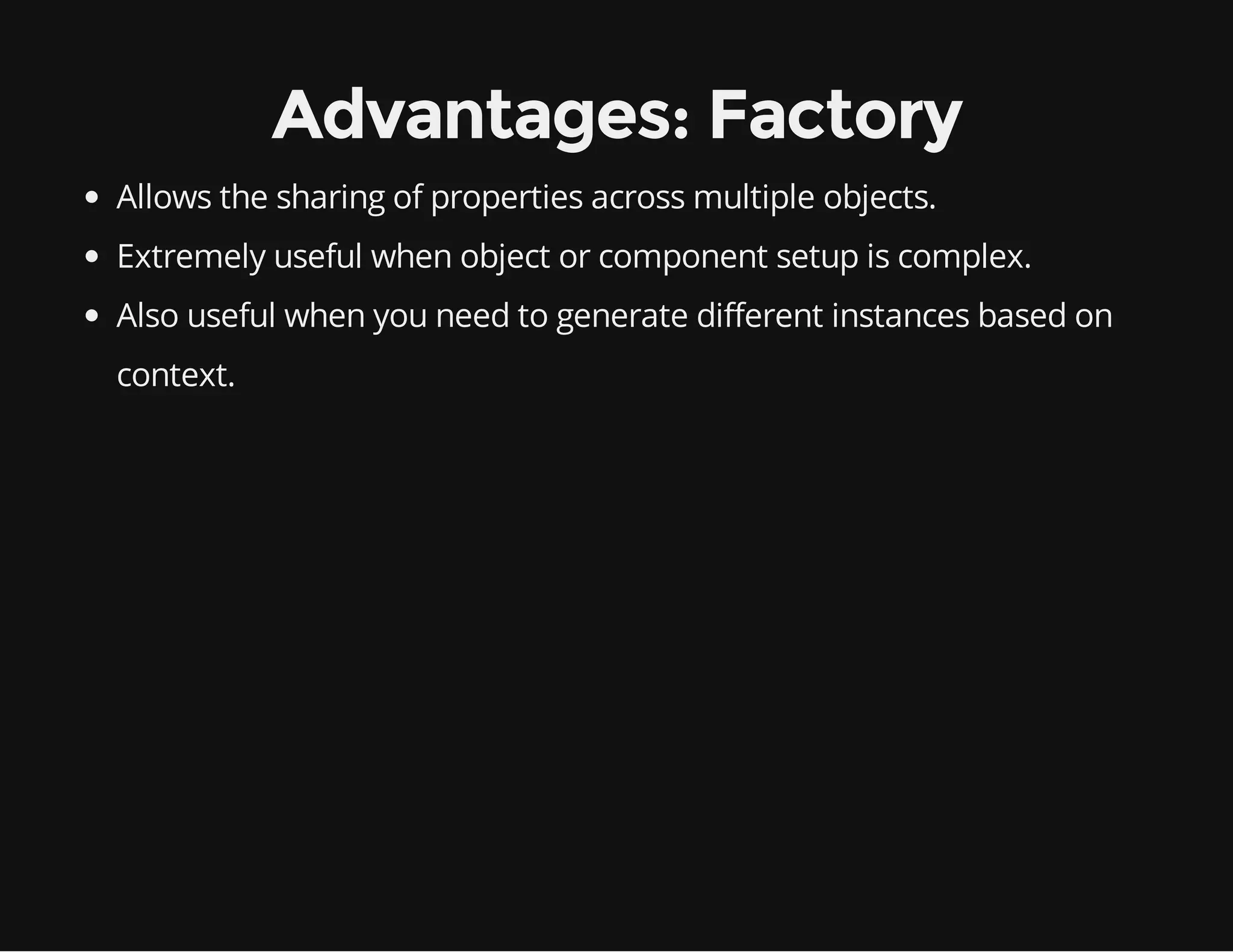
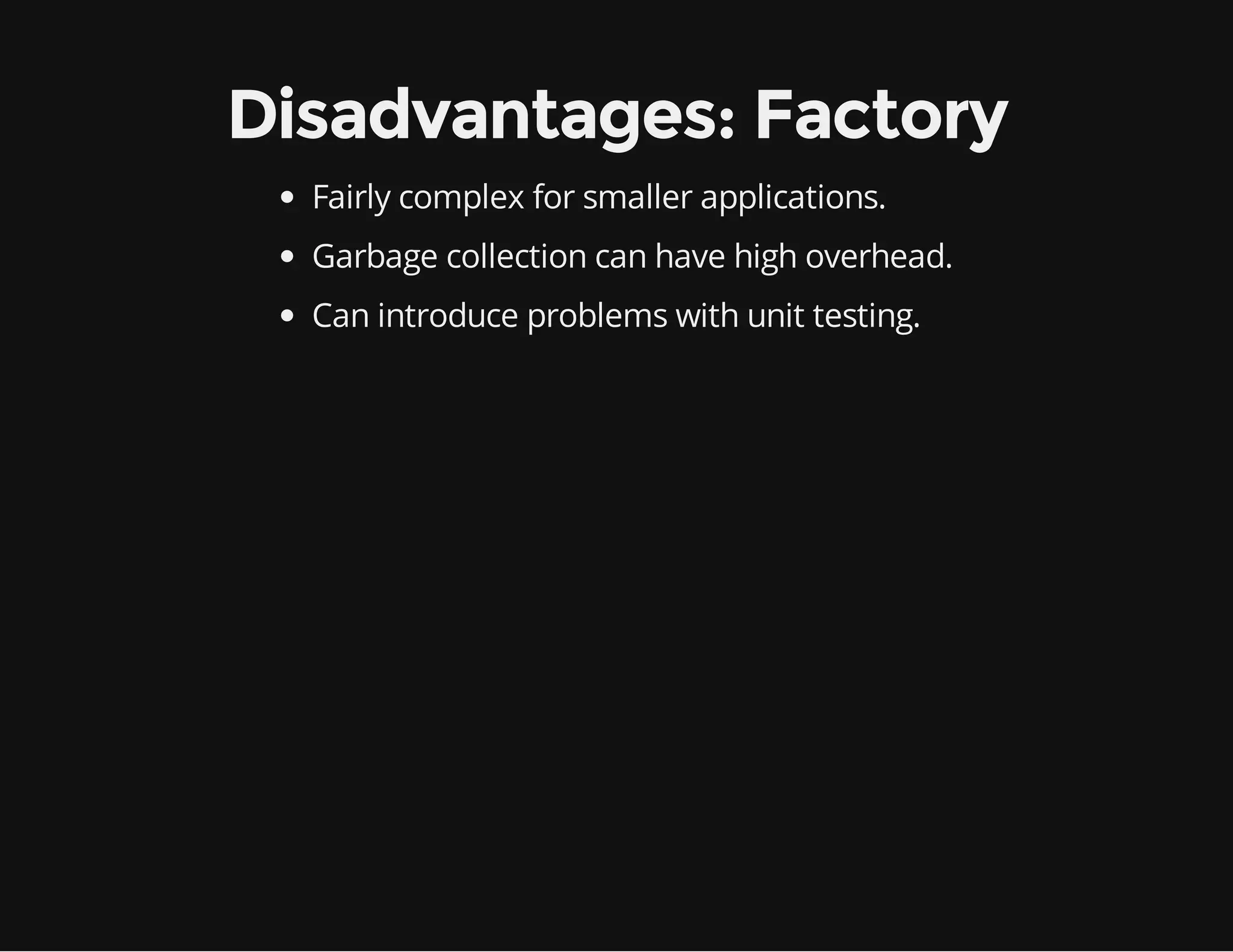

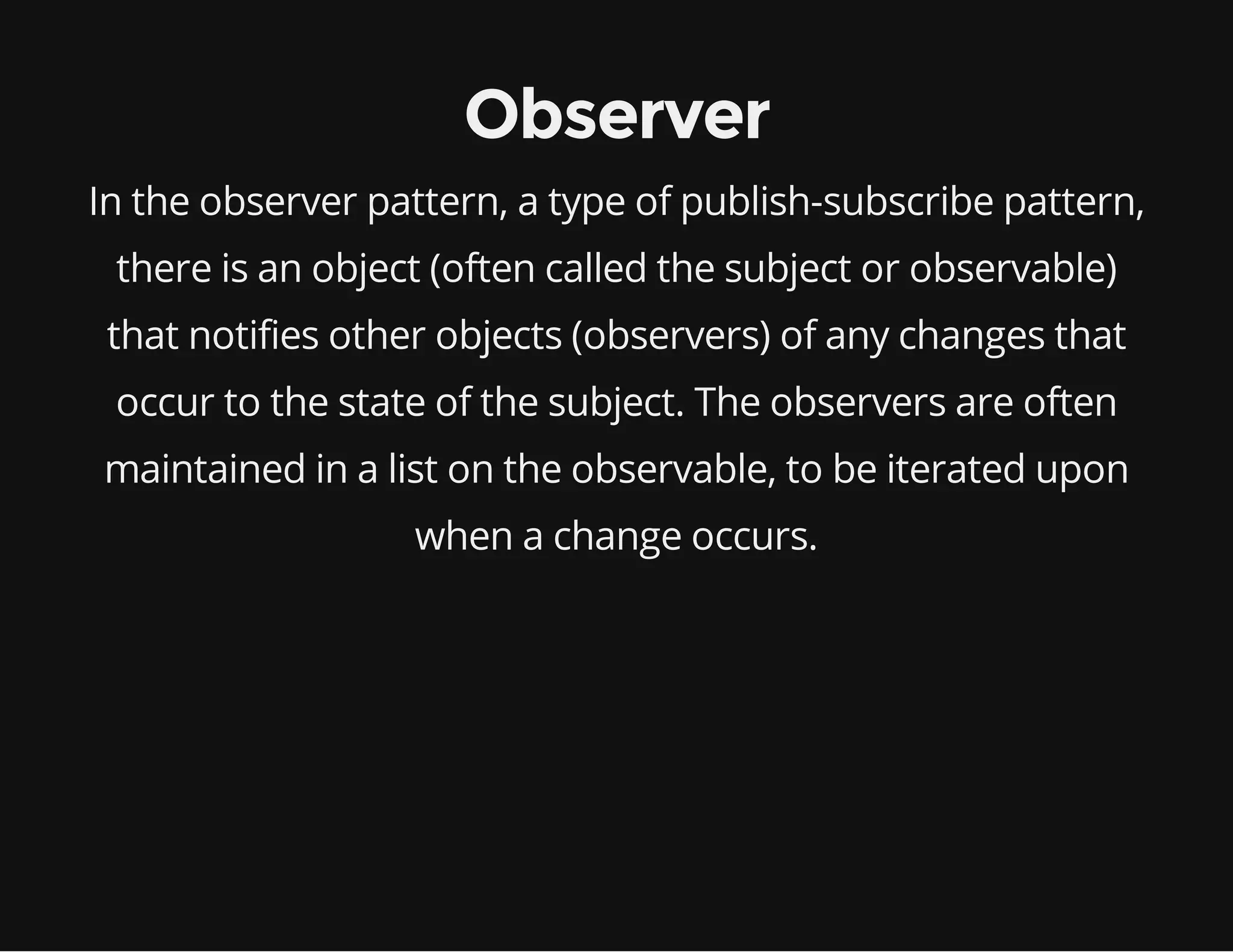
![Observer
vrosre ={
a bevr
adusrbr fnto (alak {
dSbcie: ucin clbc)
ti.usrbr[hssbcieslnt]=clbc;
hssbciesti.usrbr.egh
alak
}
,
rmvSbcie:fnto (alak {
eoeusrbr ucin clbc)
fr(a i=0 i<ti.usrbr.egh i+ {
o vr
;
hssbcieslnt; +)
i (hssbciesi ==clbc){
f ti.usrbr[] = alak
dlt(hssbciesi)
eeeti.usrbr[];
}
}
}
,
pbih fnto (ht {
uls: ucin wa)
fr(a i=0 i<ti.usrbr.egh i+ {
o vr
;
hssbcieslnt; +)
Source: For another example using Ember's implementation, check out Chad Hietala's Connection
i ( y e f t i . u s r b rrepository. ' u c i n ) {
f tpo hssbciesi == fnto'
Viewer [ ] =
ti.usrbr[]wa)
hssbciesi(ht;
}
}
}
,
mkPbihr fnto (){/ trsa ojc it apbihr
aeulse: ucin o
/ un n bet no
ulse
fr(a ii ti){
o vr
n hs
oi =ti[]
[]
hsi;
osbcies=[;
.usrbr
]](https://image.slidesharecdn.com/javascriptdesignpatterns-131014165309-phpapp01/75/JavaScript-Design-Patterns-41-2048.jpg)
